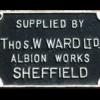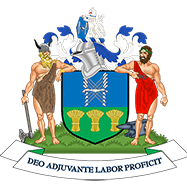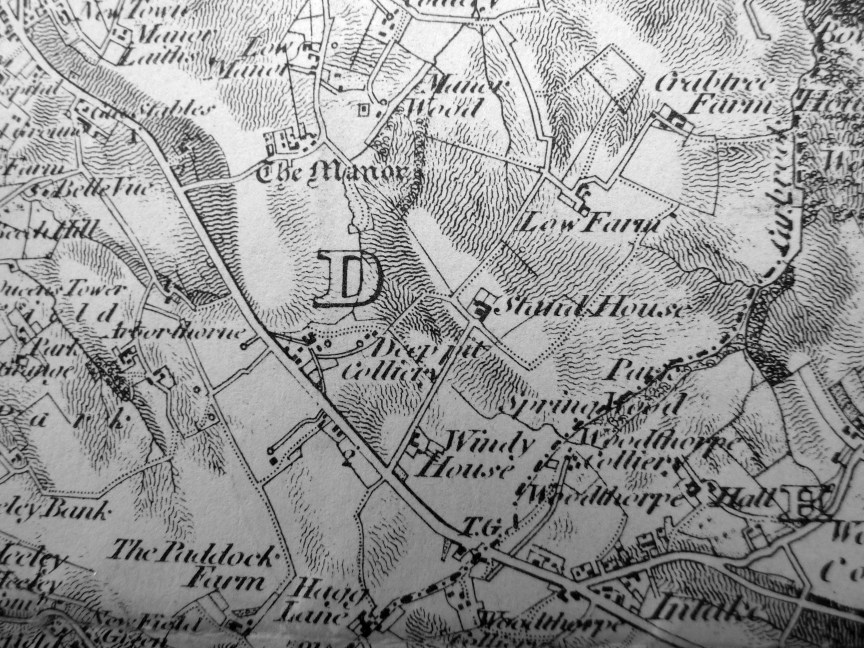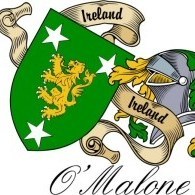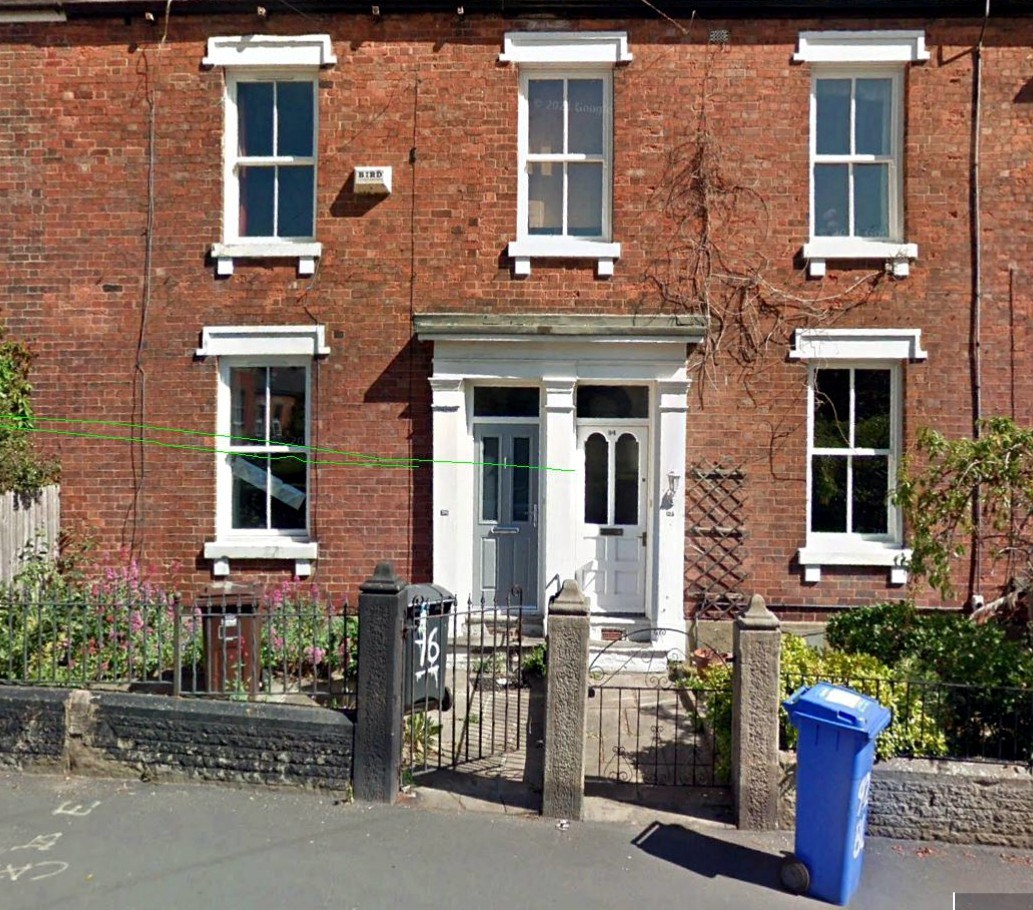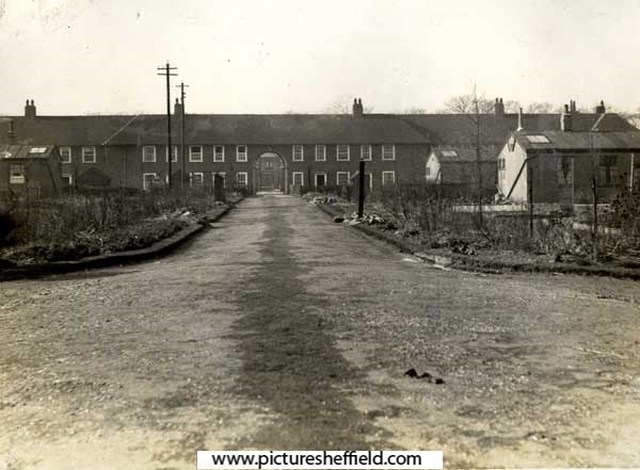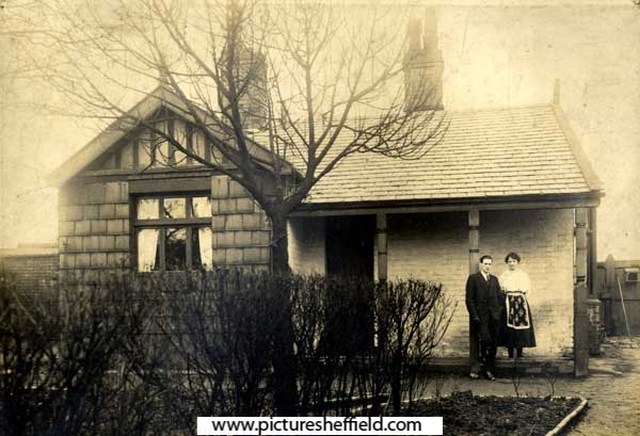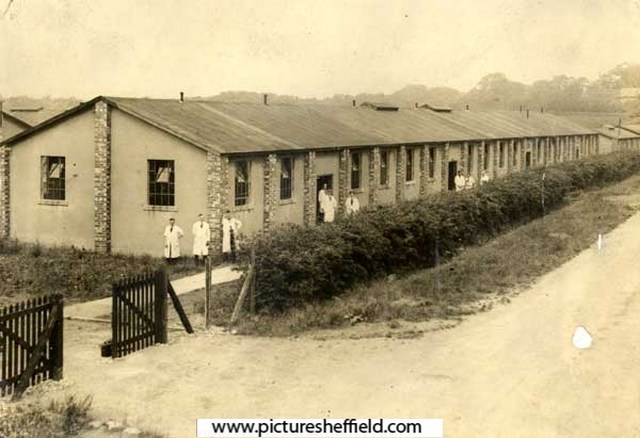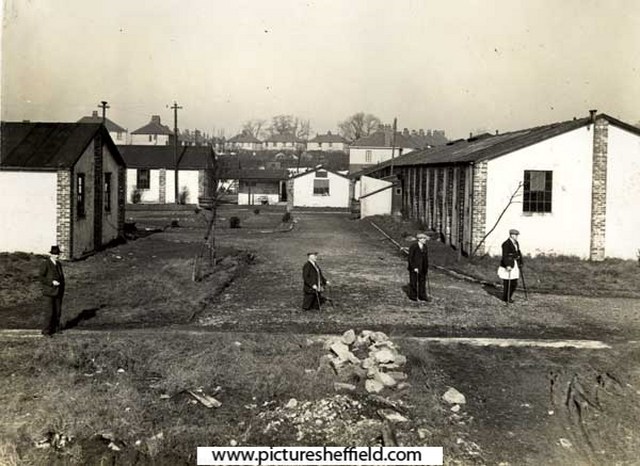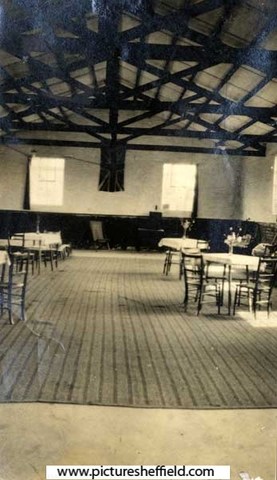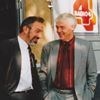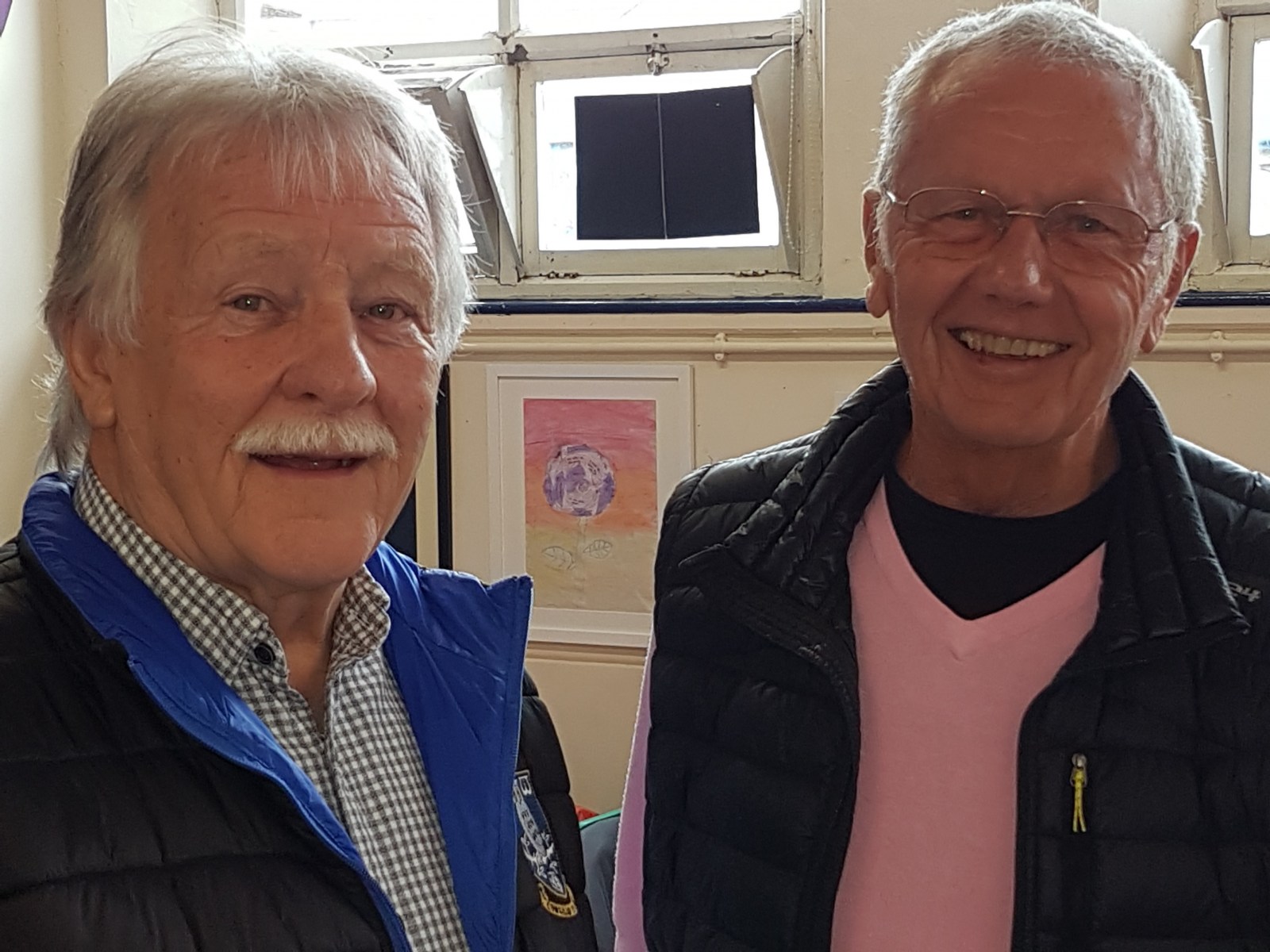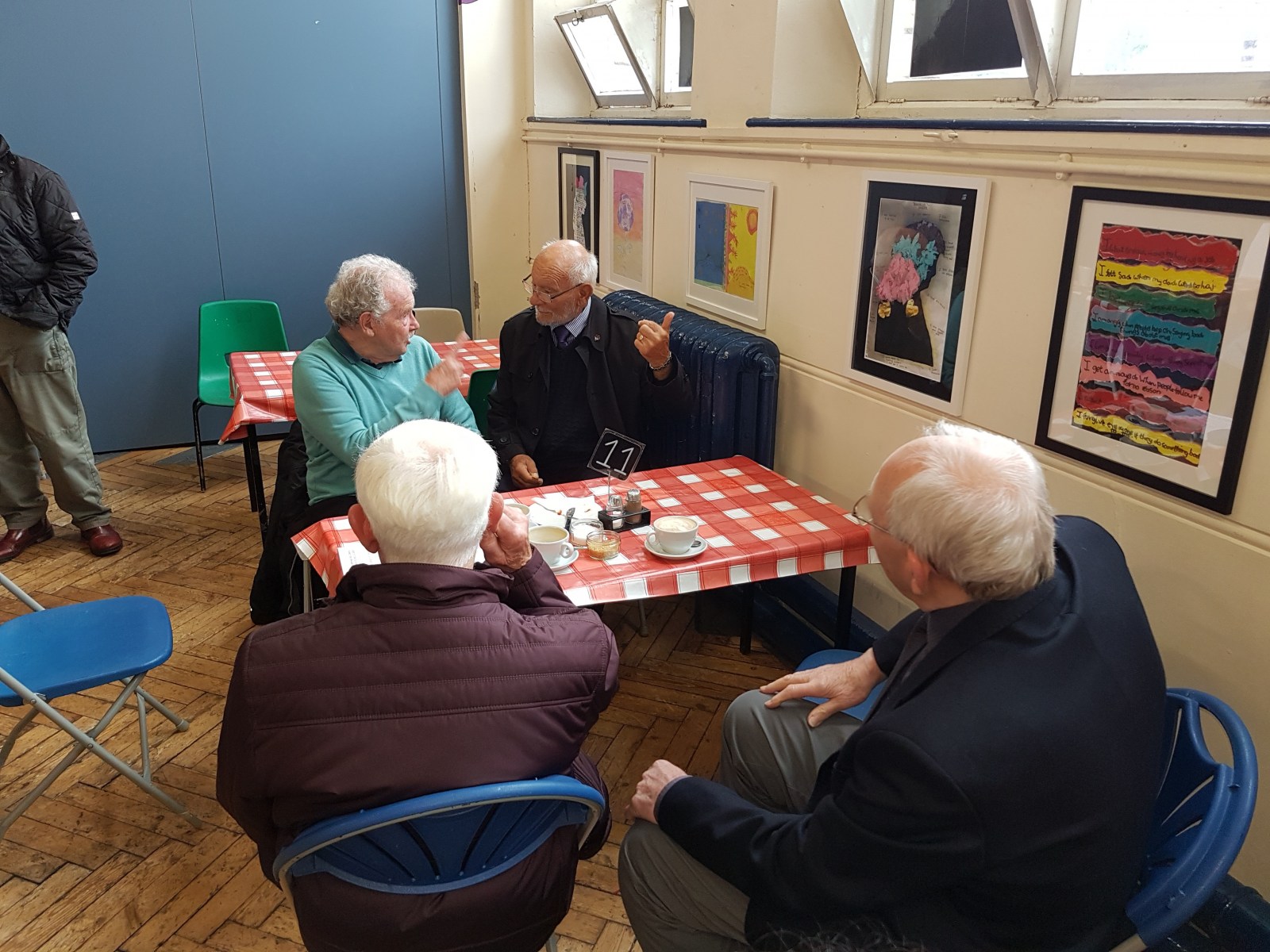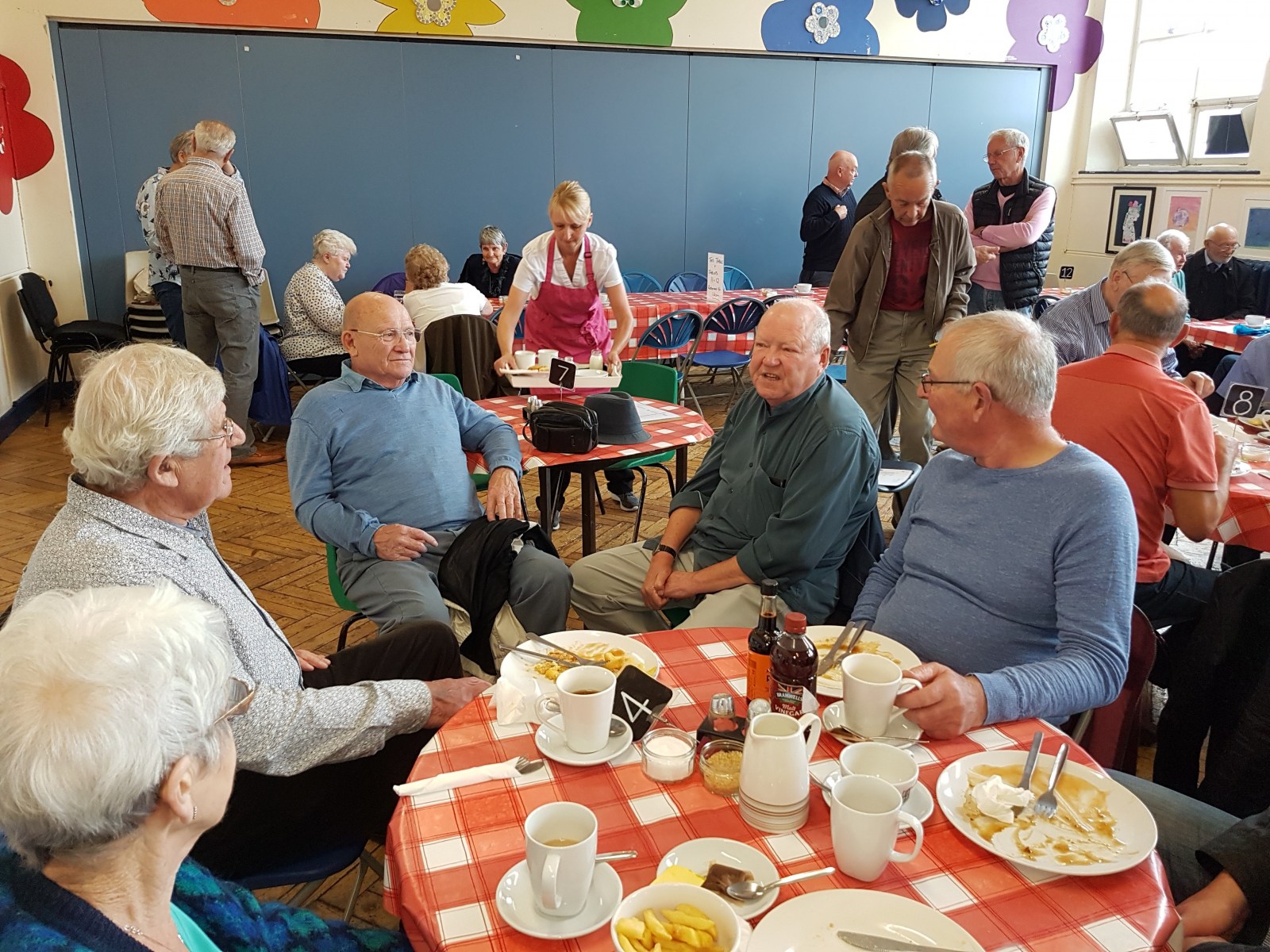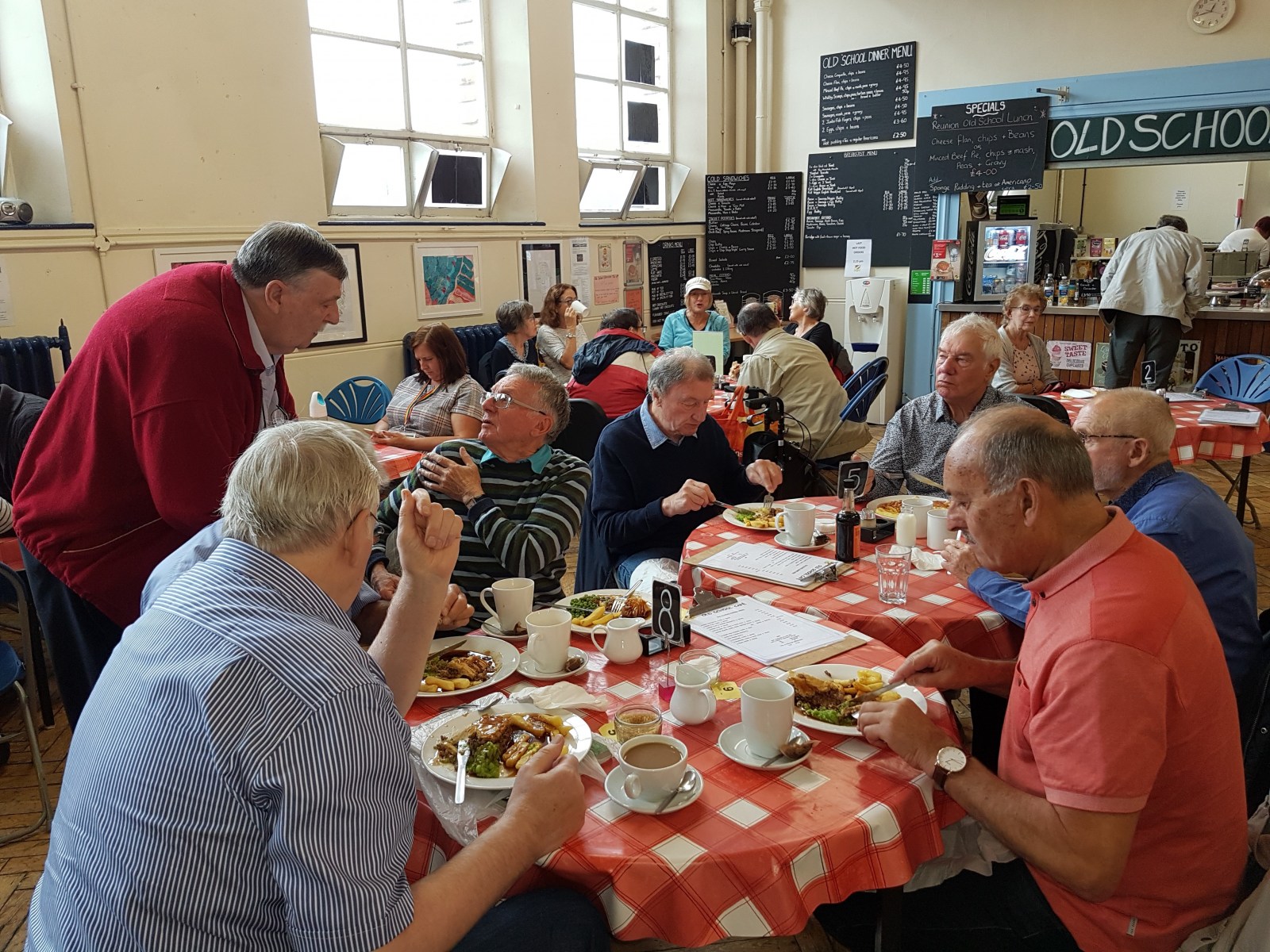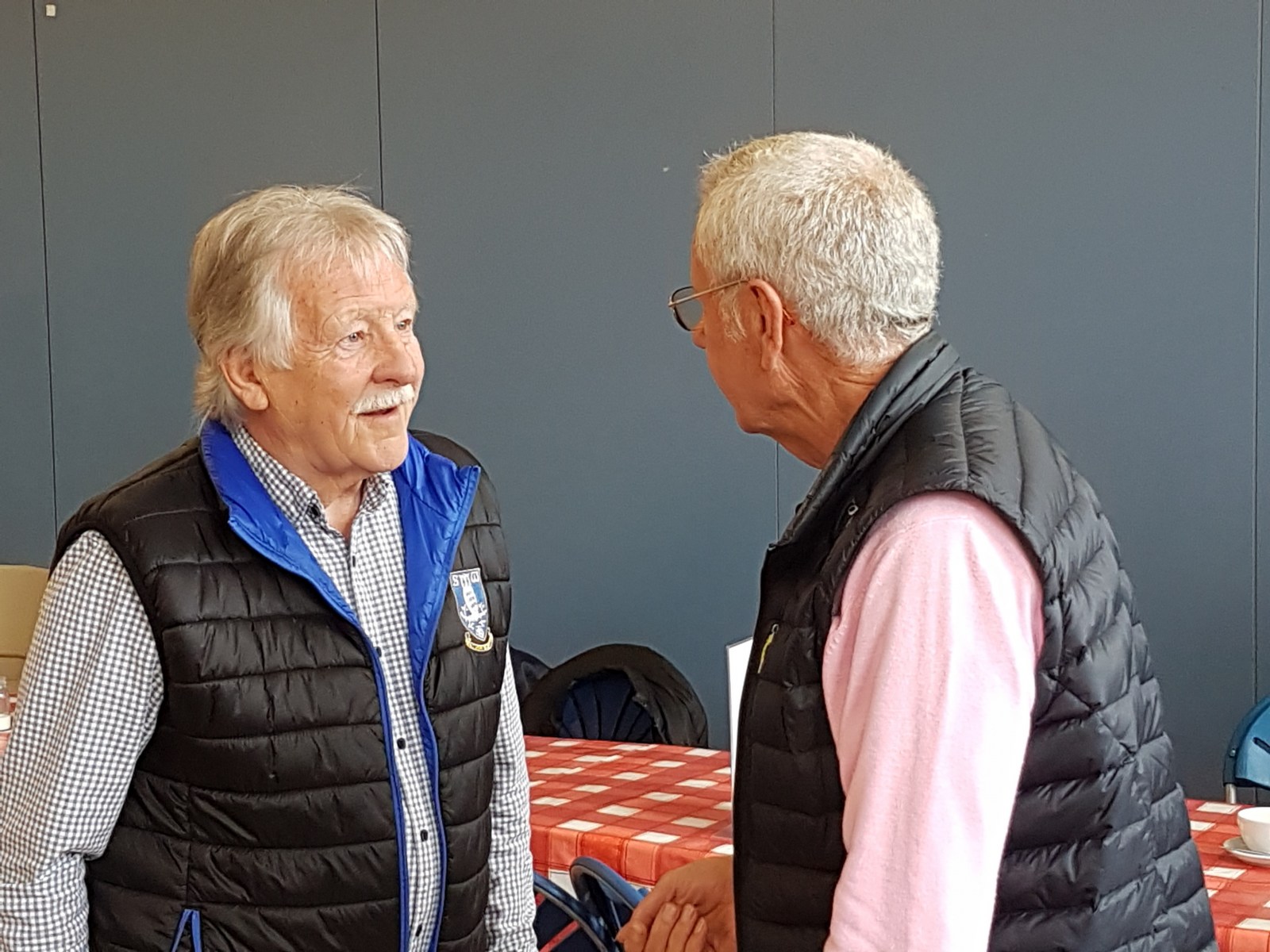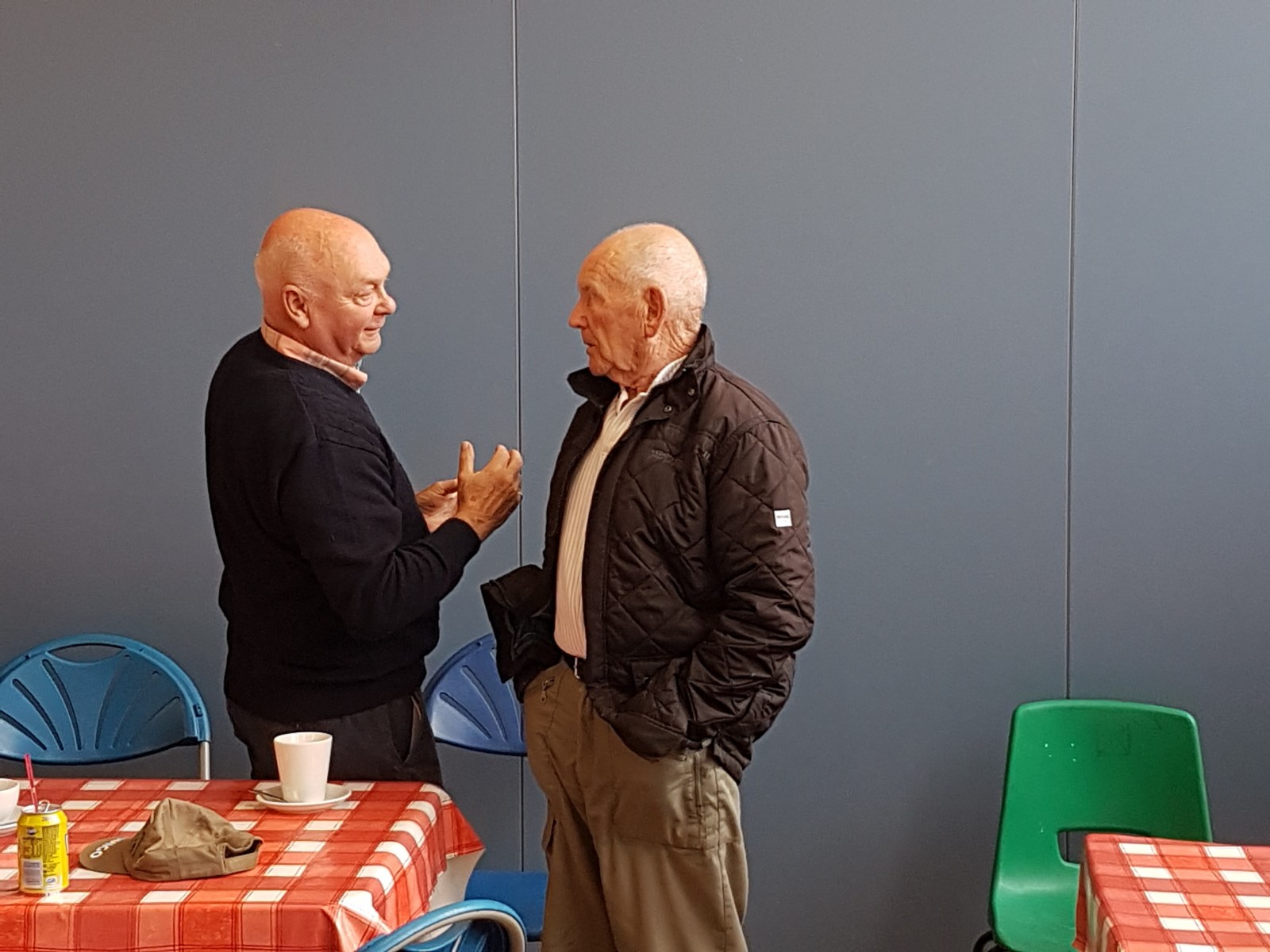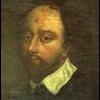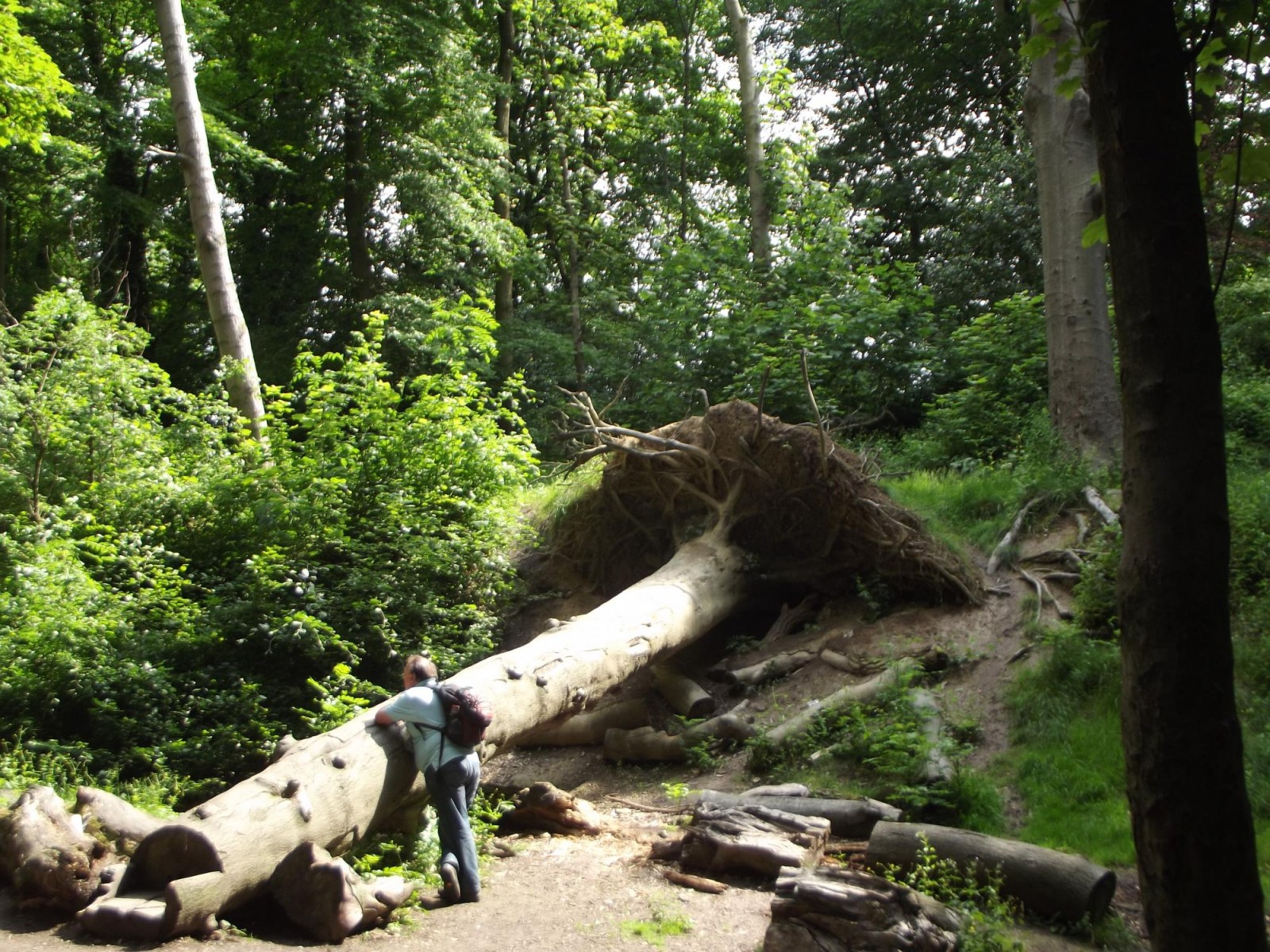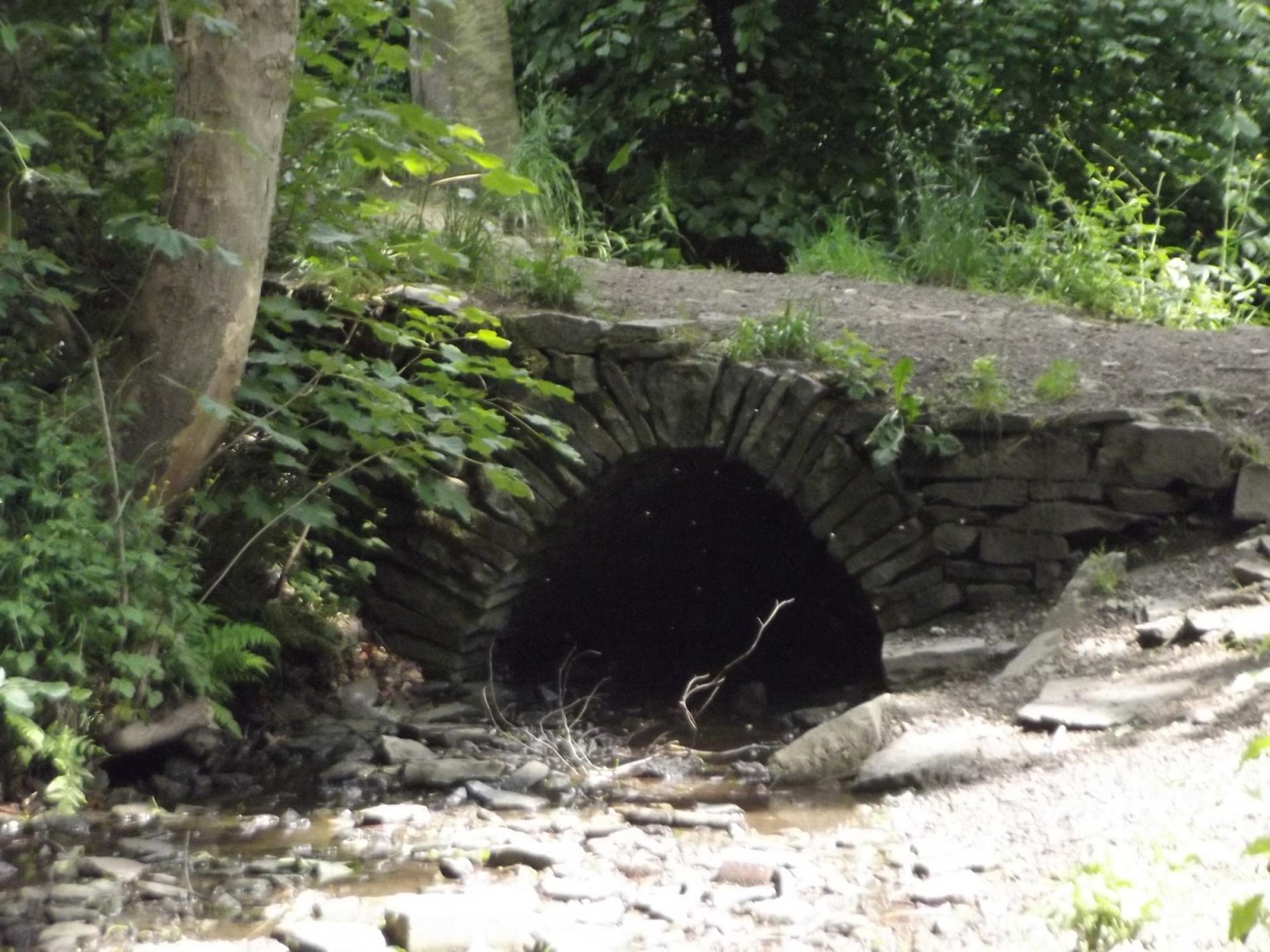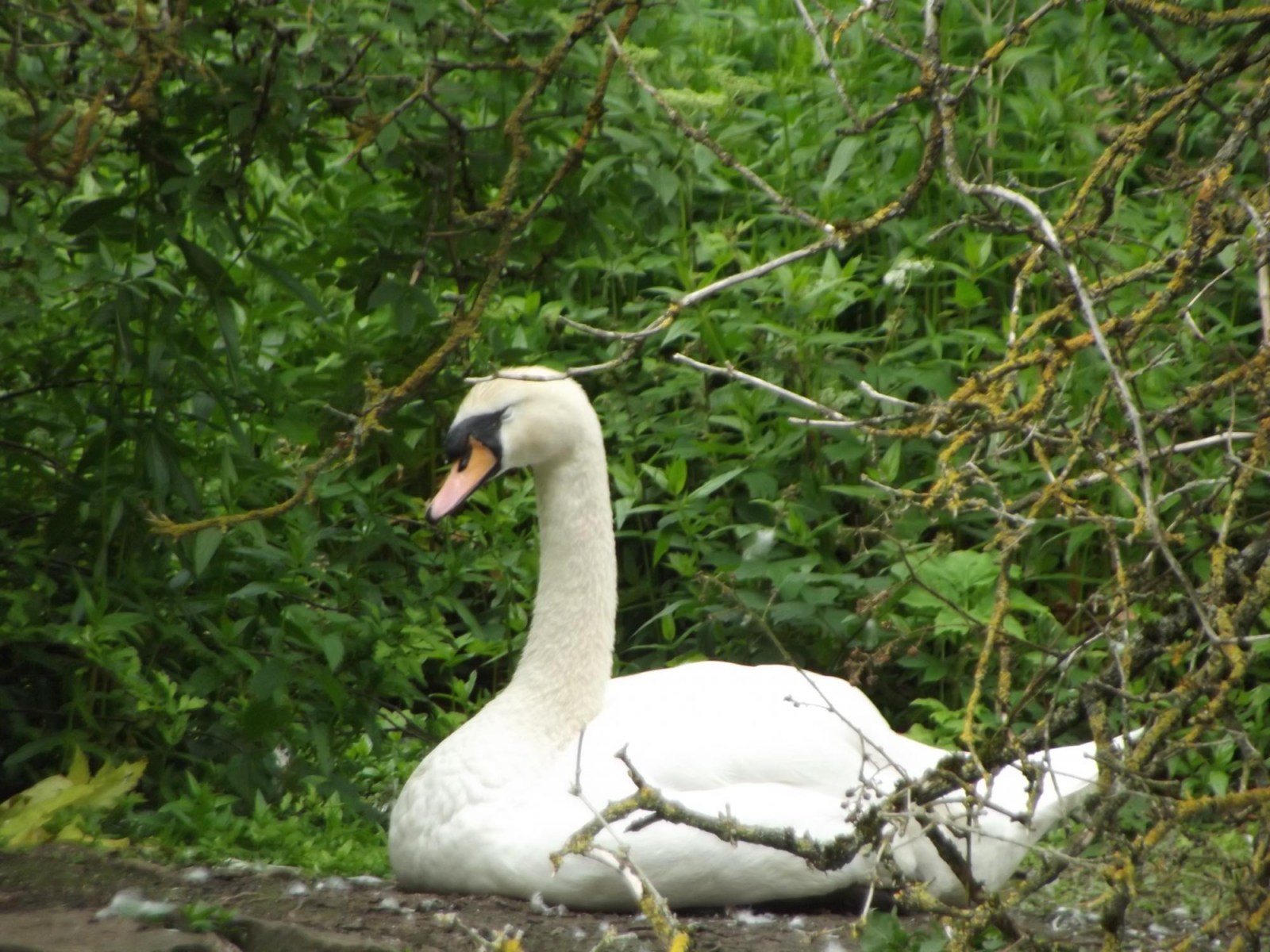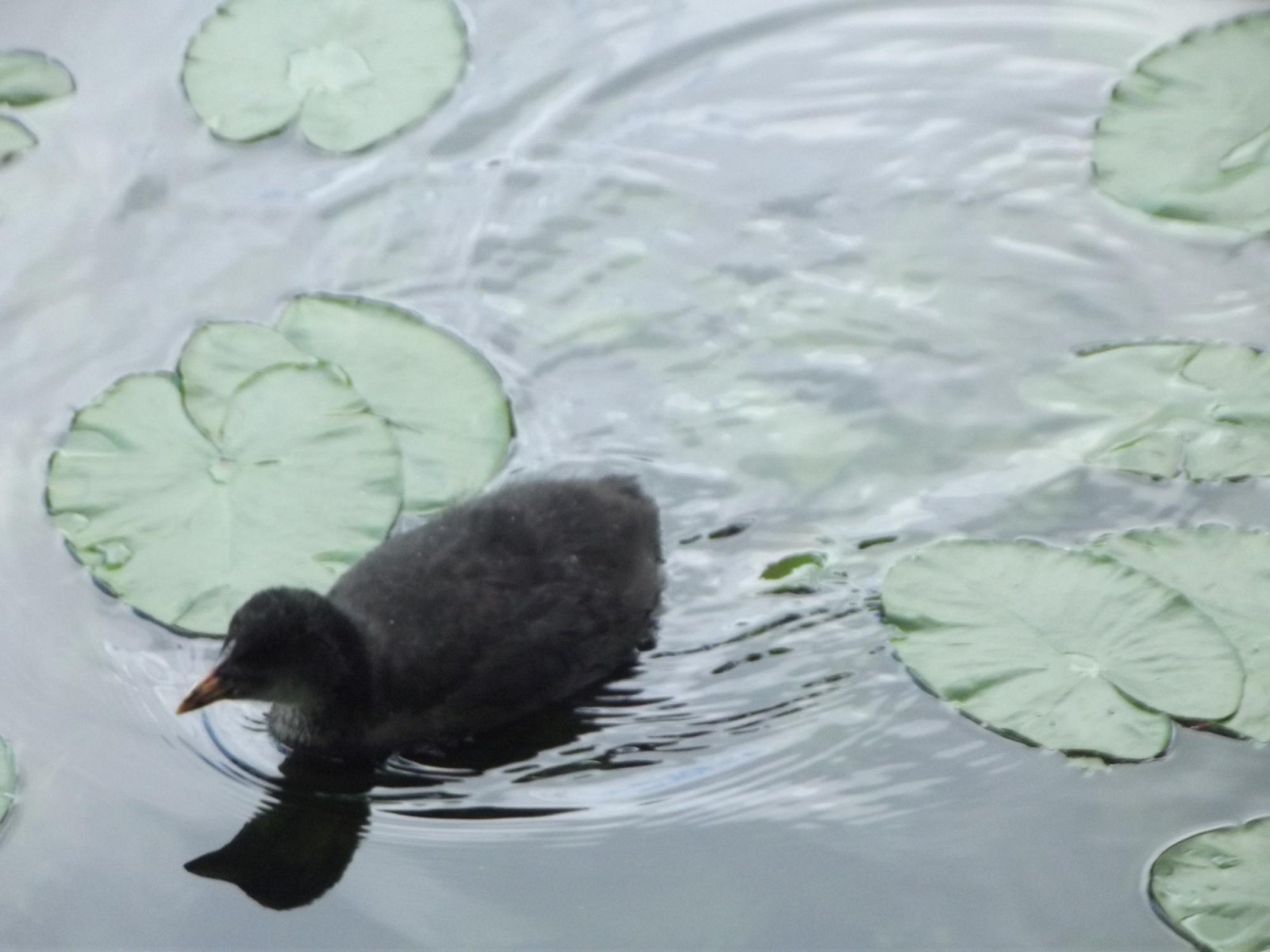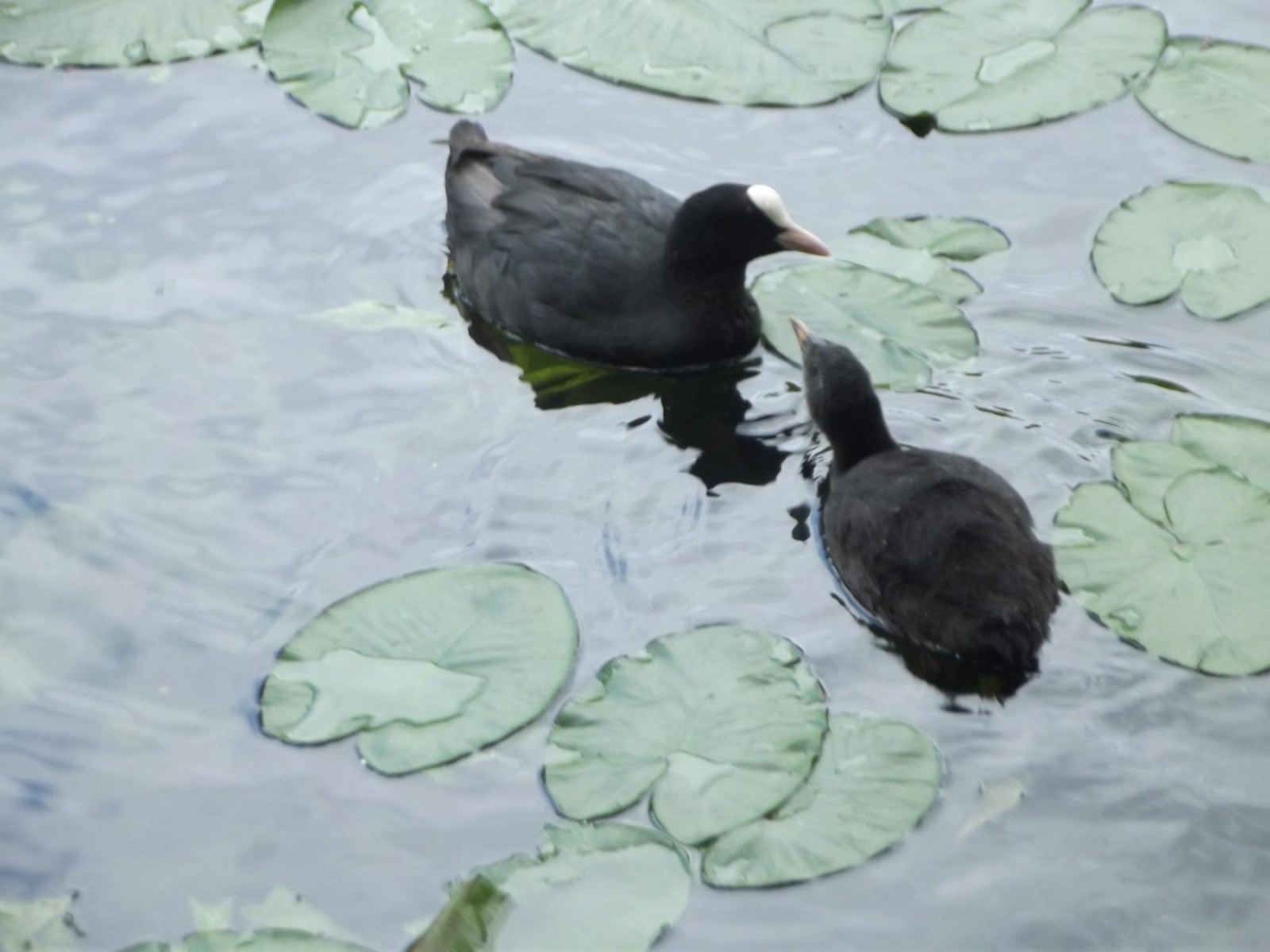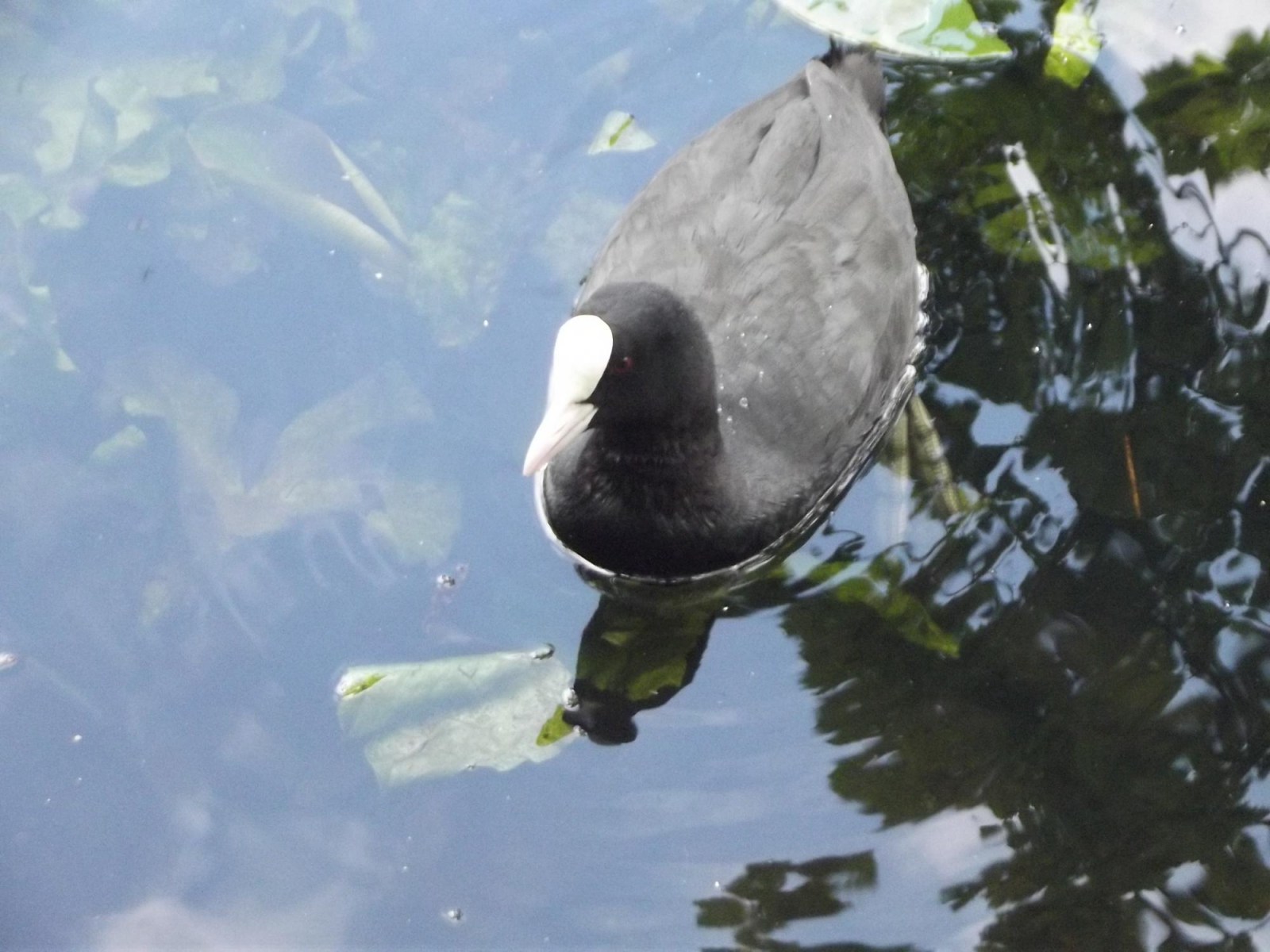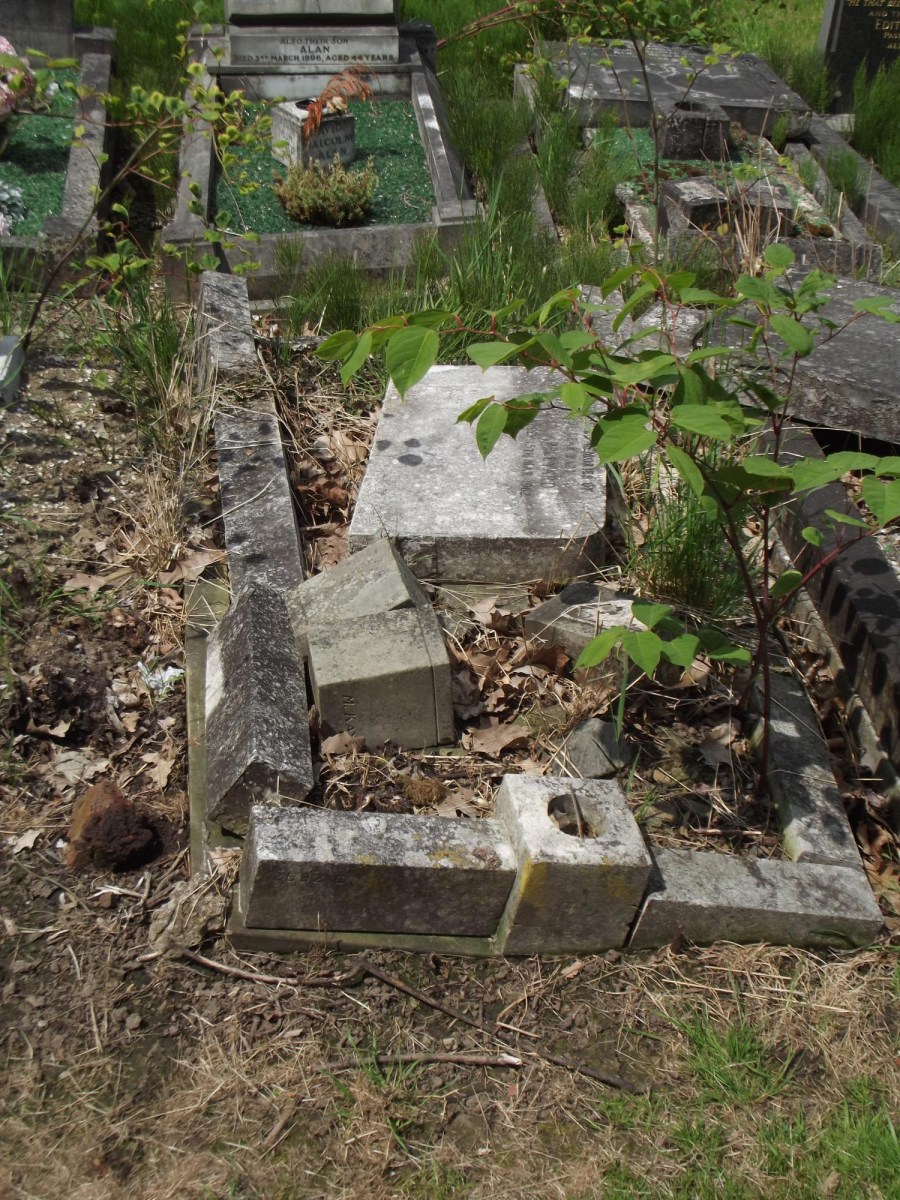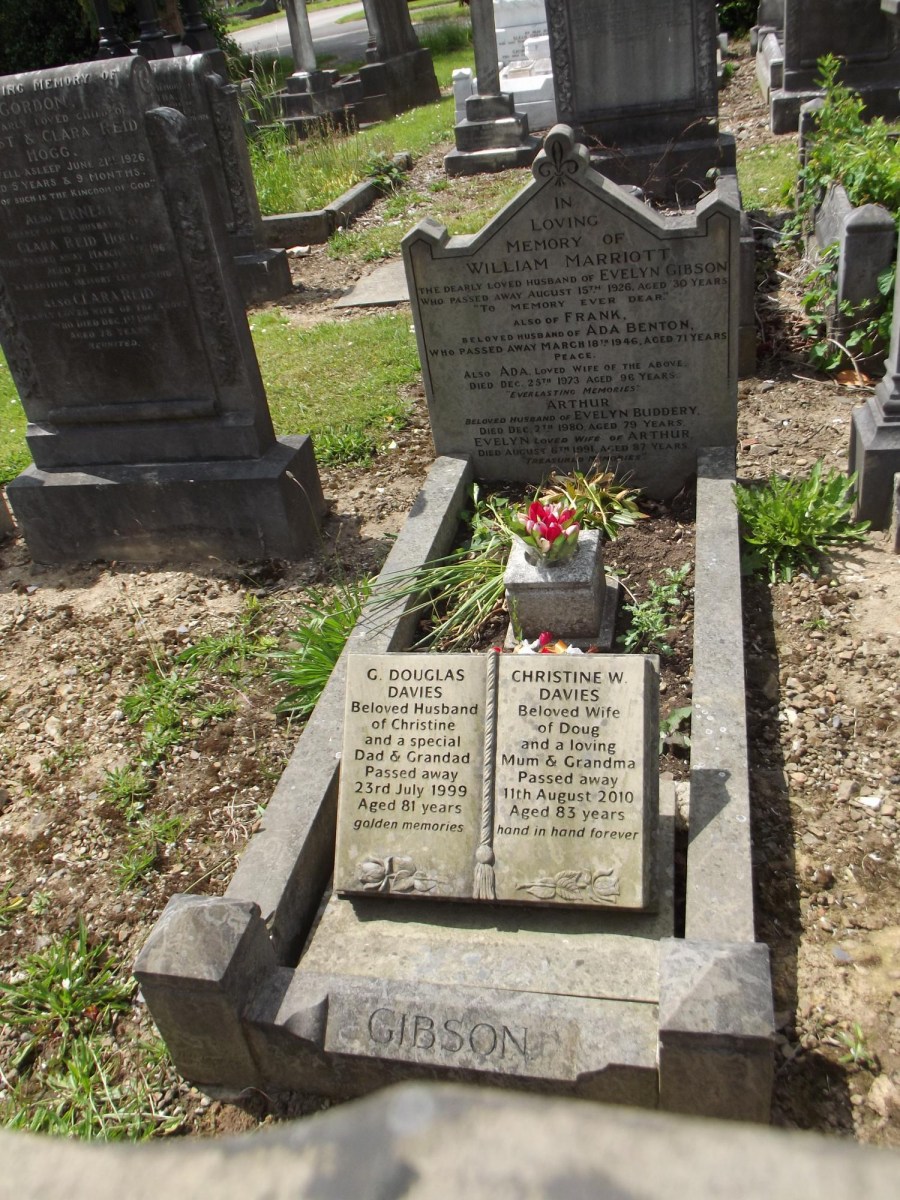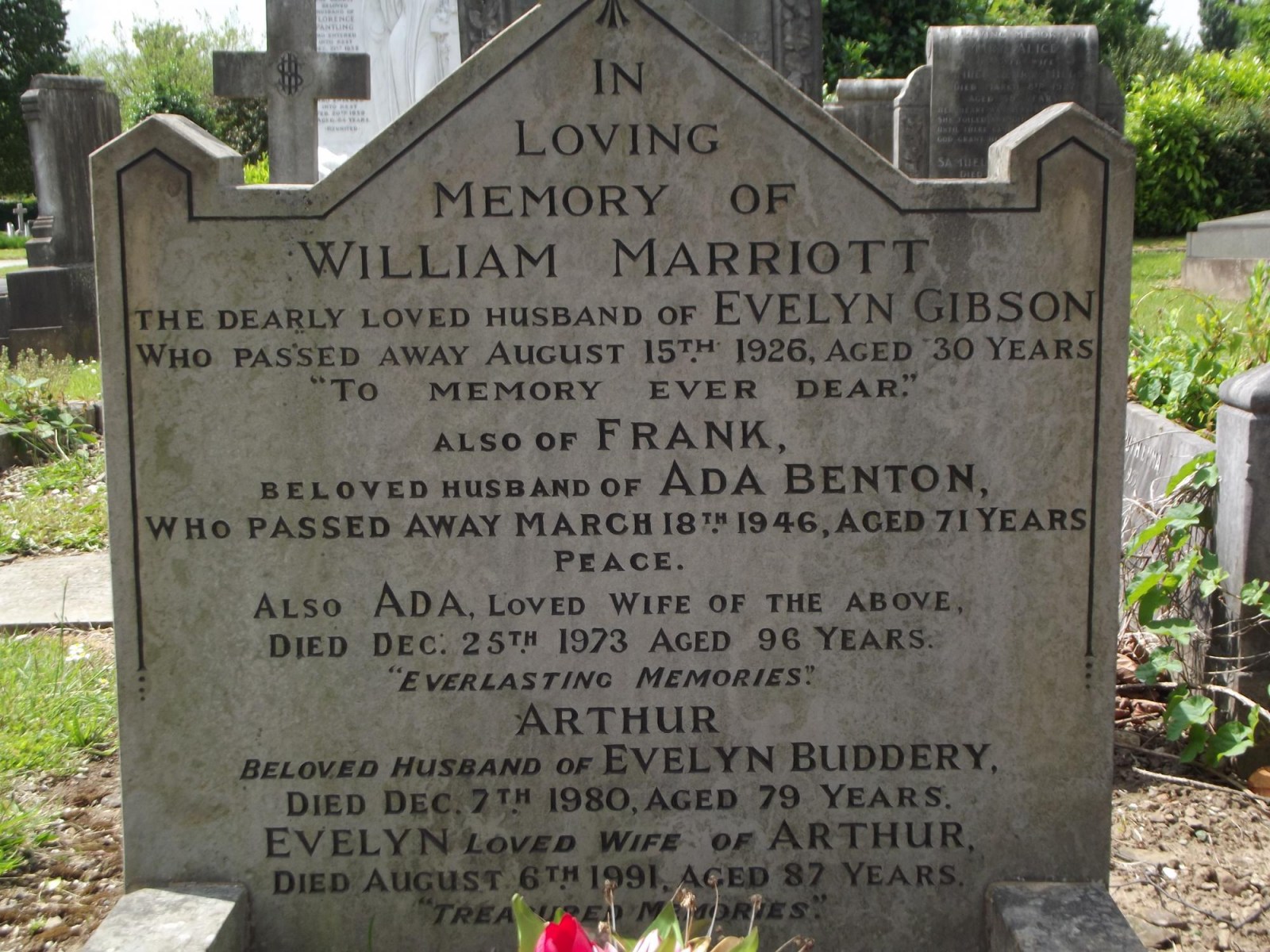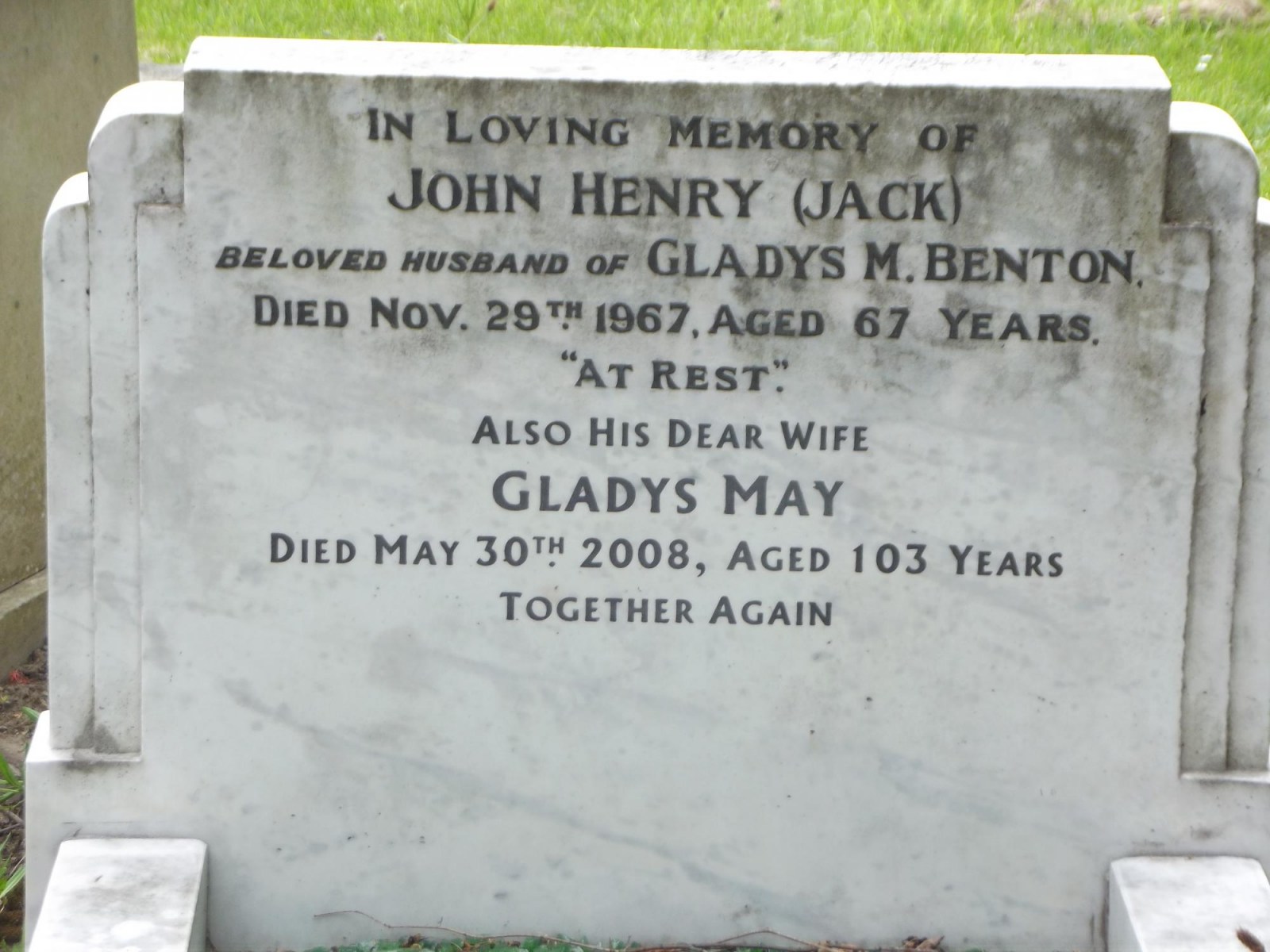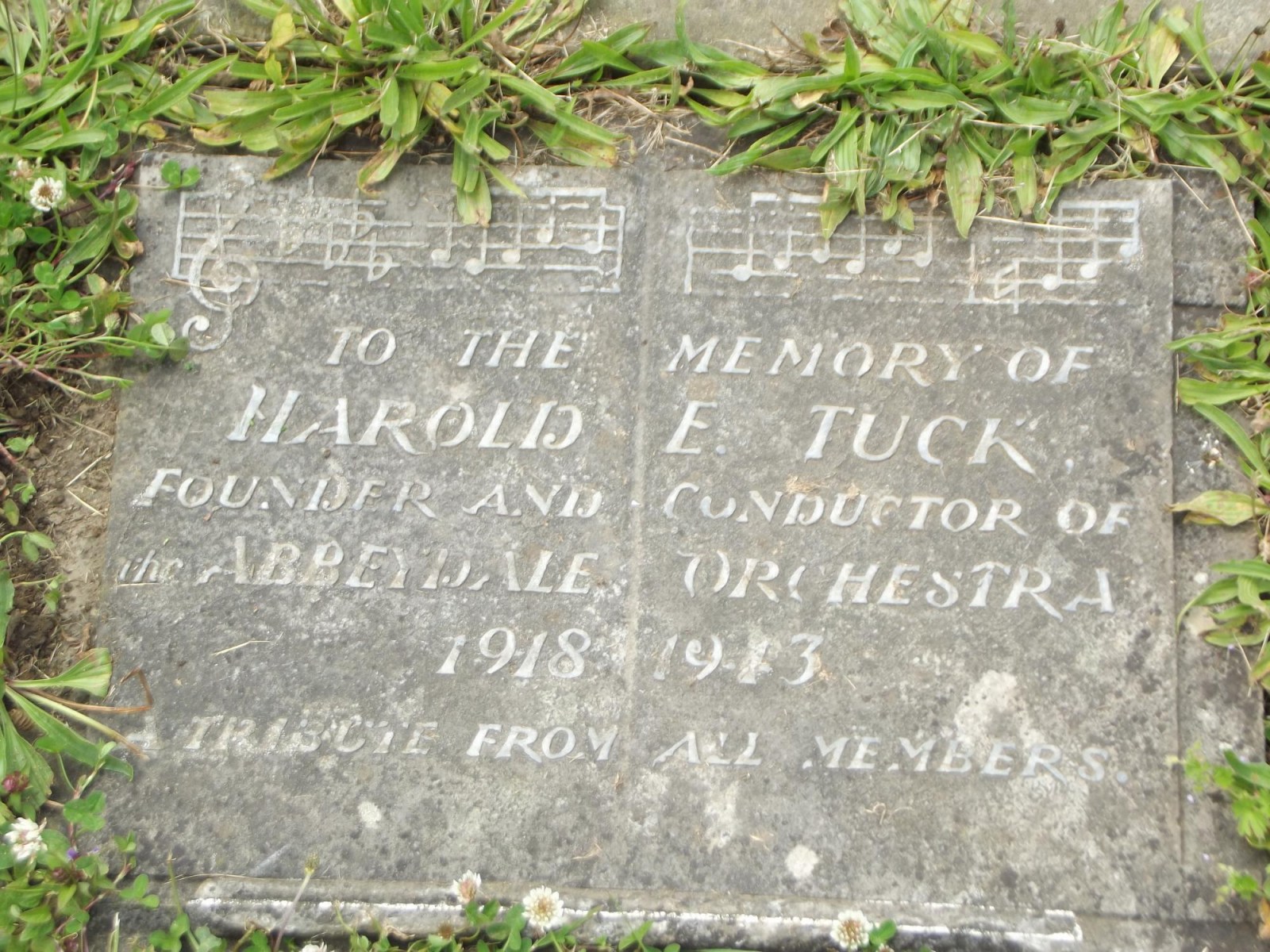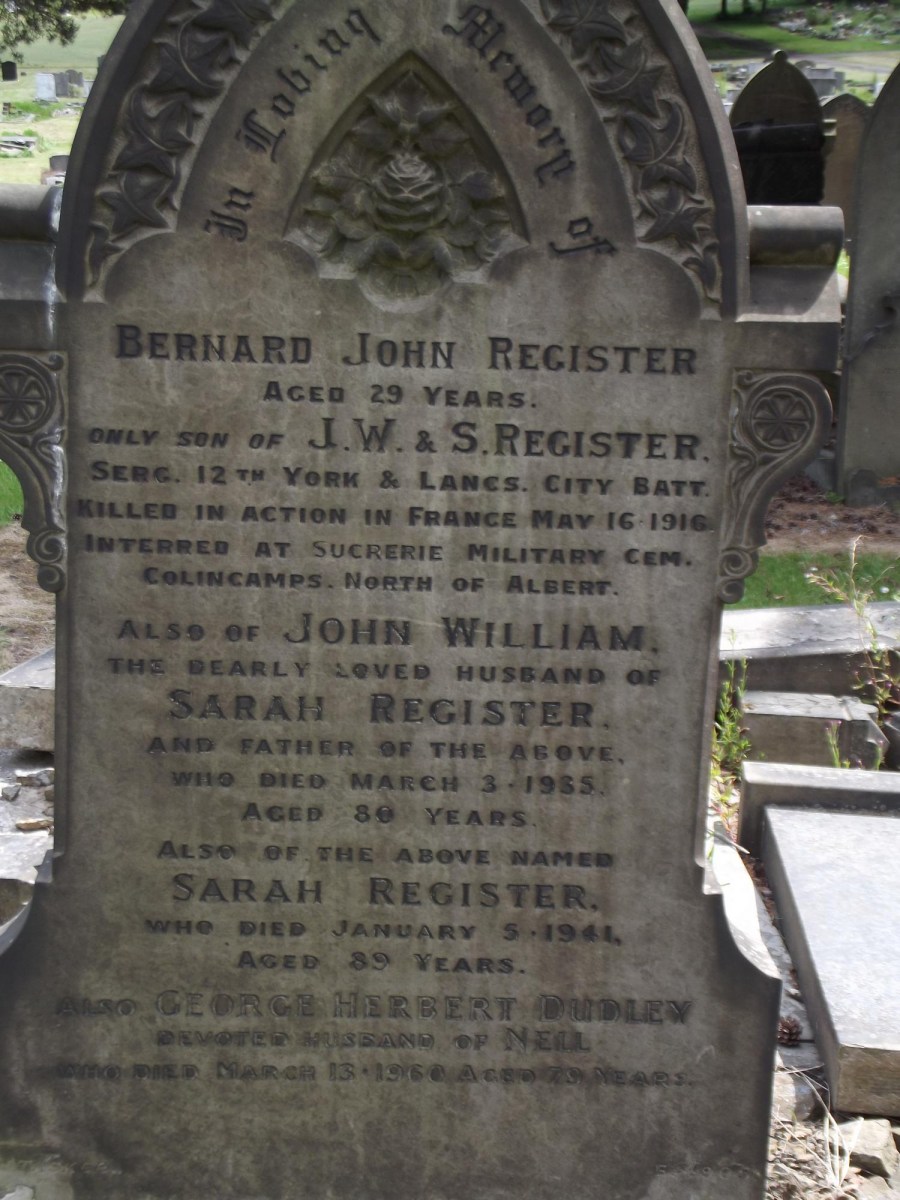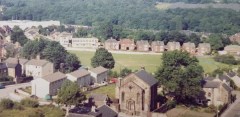Search the Community
Showing results for 'coal pit lane'.
Found 10,020 results
-
Arundel Street. Section. Levels taken for a common sewer from Porter Street to the River Porter near the White Lead Works, [1825] https://www.picturesheffield.com/frontend.php?keywords=Ref_No_increment;EQUALS;arc04027&pos=63&action=zoom&id=103213 Refers to Arundel Street, end of Duke Street, end of Earl Street, end of Eyre Lane, Porter Lane, and a culvert.
-
Land of John Watson and T. B. Holy, Arundel Street, [1830] https://www.picturesheffield.com/frontend.php?keywords=Ref_No_increment;EQUALS;arc04032&pos=67&action=zoom&id=103277 Shows Bye Goight, River Porter, land sold by James Fernley to Ellin and Ingall; Pearson and Griffith; Josh. Houldsworth; Houldsworth Lane; and Thomas Booker. Lands of T. Holy on the south side of Sheffield, showing land schemed for gardens and roads, c. 1804 and 1818 https://www.picturesheffield.com/frontend.php?keywords=Ref_No_increment;EQUALS;arc04030&pos=65&action=zoom&id=103260 Shows Arundel Street, Furnival Street, Eyre Street, Charles Street, Browne Street [Brown Street], [Arundel Lane]. Refers to Daniel Darwent, Benjamin Hadfield, Robert Hide, Benjamin Raworth [Rayworth], Joseph Skinner, Thomas Potter, David Davey, Thomas Smith, Henry Froggatt, Joseph Cantrill, Josh. Skinner, William Butcher, William Morley, Firth and Co., Charles Hutchinson, Robert Colyer, Josh. Clarke, James Linley, Jonathan Helliwell, Robert Hide, Peter Frith, and William Colwell.
-
A map of the Dams, Goights and other Works belonging to the Pond Forge Co. together with some other intermediate properties. 1820. https://www.picturesheffield.com/frontend.php?keywords=Ref_No_increment;EQUALS;arc04213&pos=73&action=zoom&id=105197 Boardman's Bridge, wear [weir], Porter Brook, goight, River Sheaf, Upper Dam, Sheaf Lane, bridge, Upper Forge Wheel, dam, Upper Forge, Sheaf Mill, steam engine, Lower Forge, grinding wheel, arched goight, tail goight, Shude Hill, Hospital Bridge, Hospitals, Sheaf Bridge, Castle Orchards Wear [weir], River Dun [River Don], Pond Street, Forge Lane, Pond Well Hill. Late Joseph Ward, John Hounsfield, Josiah Blackwell, late Abraham Wright, S. Woodcock and Sons, Joseph Blackburn, Thomas Mearbeck and Co., S. Rawson and Co. [?Thomas Rawson and Co], Joseph Shimmeld, John Vickers, Sheffield Gas Light Co., S. and S. Darwin, Sarah Beeley, Widow Beardsall, John Hale, Widow Badger, and J. B. Ward.
-

Heeley Bottom - City centre - Bramall Lane (by car) 1994
SteveHB posted a topic in Sheffield History Chat
-
Plan of proposed extension of Eyre Street to Porter Street and also the proposed widening of Porter Bridge. 1845. https://www.picturesheffield.com/frontend.php?keywords=Ref_No_increment;EQUALS;arc06810&pos=76&action=zoom&id=106241 Also shown are Brammall Lane [Bramall Lane], Hereford Street, Sylvester Street, Cumberland Street, and the Porter Brook.
-
Bennett Wheel. A plan of the Cutler's Wheel House on Little Sheffield Moor held of the Earl of Surrey by James Bennett. 1784. https://www.picturesheffield.com/frontend.php?keywords=Ref_No_increment;EQUALS;arc03503&pos=82&action=zoom&id=91098 Bennett's Wheel and Dam, the watering place and all the courses of the River Porter shown; some measurements. Watering Place. (Ellin Street, St Mary's Road). Weighing machine house and some ground adjoining Bennet’s Dam belonging to George Bennet, [1807] https://www.picturesheffield.com/frontend.php?keywords=Ref_No_increment;EQUALS;arc03640&pos=33&action=zoom&id=99191 Bennett's Wheel and the land adjoining as divided into lots for sale, The Moor, [1819] https://www.picturesheffield.com/frontend.php?keywords=Ref_No_increment;EQUALS;arc04155&pos=70&action=zoom&id=104118 The plan includes a building scheme over the part of the dam adjoining South Street, but it was not proceeded with. Shows South Street, Hereford Street and Porter Lane. Also, [River Porter] and Bennett's Wheel. Bennett's Wheel and premises adjoining agreed to be sold to Thomas Ellin. 1831. https://www.picturesheffield.com/frontend.php?keywords=Ref_No_increment;EQUALS;arc04156&pos=71&action=zoom&id=104119 Marked: South Street, Hereford Street, Porter Street, Sylvester Street, bridge, River porter, wear [weir], goight, tail goight, Bennets [Bennett's ] Wheel, dam, Back Lane, bye wash, and garden. Tenants / owners: Samuel Newbould, John Watsen [Watson], Peter Jerrison, and late George Hodgson. Note: the Field Book has Sylvester Wheel, but this is palpably an error.
-
Charles Brown's ballooning career: Brown's first balloon was exhibited from 17th July 1824 in a specially constructed building in a yard in Carver street, lately occupied by Wm. Hodgson and Co. Admission was 2 shillings for Ladies and Gentlemen, a shilling for working people and 1s 6d for families of over four people, but by the 23rd July had reduced to 1 shilling for the gentry and 6d for workers. This balloon was 35 feet in diameter, formed from tapering pieces of silk, 33 inches wide, over sixty feet long and in alternating colours of crimson and white. The car was beautifully ornamented and lined with crimson silk with a festooned canopy. Brown's first ascent had been in Sadler's balloon at Derby (William Wyndham Sadler was killed in October 1824 when his balloon hit a Bolton chimney, and his head hit the brickwork). Brown's second aerial voyage was made on Tuesday 10th August 1824 from James Hibberson's garden in Sycamore street. This first ascent in his own balloon was planned to include Brown's brother, but the balloon would not support two passengers. The Sheffield Gas Company provided him with 10,500 cubic feet of gas. The intention was to charge spectators to defray his costs, but attendance was low, as Park Hill provided free viewing for the crowds. Brown had never piloted a balloon previously, but successfully ascended and was in the clouds within ten minutes. Brown initially had to throw out two of his three bags of ballast (8 pounds each) and he eventually reached an altitude of over a mile (2,166 yards). After going through a brief snow storm, he passed Tickhill, and shouted to the people below using his hailing trumpet, though they didn't hear. He began rapidly descending and wanting to retain his last bag of ballast, removed his boots to throw out, however the balloon recovered before this was needed. He continued as far as Mr Pearson's rye field at Axholme. Several gentlemen who had followed him from Tickhill assisted recovery of the balloon together with local 'peasants'. In Bawtry a chaise was arranged and the party arrived in Sheffield (at the Twelve O' Clock Public House) at quarter to two a.m. His third flight was from Barnsley, with his balloon now named "Herschell", and was planned for 2 p.m. on 6th September 1824 from a piece of ground next to the Gas Works. Tickets at the Gas House Gates were 2s 6d or for admission to Mr Horsfall's timber yard in May Day Green tickets were 1 shilling. Due to the weather, the ascent was postponed to the next day (Tuesday). On this voyage he attained 3,190 yards, landing 2 miles from Ferrybridge at Sir John Ramsey's Park. His fourth ascent was from Wakefield at their Musical Festival. Brown's next flight was on Wednesday 10th August 1825 from Wright & Haslehurst's new cricket ground at the Top of the Park, Sheffield. For this flight he gave the added attraction of a crimson and white parachute being released with an animal attached, though this didn't happen due to storms. After a wait for a thunderstorm to disperse, and difficulties filling the balloon, it struggled to reach 600 feet as it was wet and heavy, and pedestrians pursued the balloon through the streets of Sheffield. People on the roof of the music hall in Charles street could hear Brown calling for people to follow him and give assistance. At about 5 p.m. the balloon cleared the town centre at 3-400 feet and was headed towards Heeley, landing at Brincliffe Edge. Wednesday 31st August 1825 at Hull was his next outing. On May 26th 1826 Brown took off from Beverley, landing at Thorne, however the wind was so strong, and with no assistance on landing, he had to let the balloon go - he advertised a reward for its return. "Herschell" was found at Swithamly Hall near Leek, the seat of Trafford Trafford Esq. whose wife saw it suspended over trees as the grappling hook had snagged a wall - the wall collapsed and the balloon ascended but the hook caught on a very tall tree, and with the help of 30 men it was secured and returned by post-chaise to Brown in Sheffield. Browns next ascent, with an improved "Herschell" was on Whit Monday 4th June 1827 from the Hyde Park Cricket Ground again. When Brown arrived at 3p.m., he was upset that his assistants had allowed the balloon to be damaged by gusts of wind. The ascent was reluctantly abandoned, until 11th June. For this ascent Charles was accompanied by his brother Roger. The next ascent was on 30th August 1827, from the piece of ground behind the Balloon Tavern in Sycamore street. On 6th September 1827 he travelled 10 miles setting off from Pontefract. On 6th October 1827 the venue was Wood street, Wakefield, opposite the Woodman Inn. Unfortunately Charles Brown was ill, so his younger brother Roger was to pilot the balloon. After delays, the balloon took off at about 5p.m. and disappeared into the clouds. But suddenly it re-appeared, making a rapid and apparently uncontrolled descent. The frantic voice of the aeronaut could be heard, and the balloon appeared to have collapsed. Due to his inexperience, when the balloon was buffeted by violent winds in the upper reaches, Roger pulled the wrong rope which allowed most of the gas to escape via the safety valve. He landed two miles away near the village of Flanshaw, and thousands of spectators ran in that direction, finding him with a broken foot and a head injury. A gig was found to take him to a local surgeon, and he suffered no permanent ill-effects. The Browns seem to have had a break for a few years, but in July 1838 Charles announced plans to make two ascents in his new balloon, the "Great North Star", constructed solely by Brown, from the Botanical Gardens on Thursday 2nd and Monday 6th August 1838. The Thurday event was cancelled due to the weather, and no gas being available the following day. On the Monday, Brown was accompanied by Mr Spring of the Masbro' Brewery. The balloon almost hit the top of the lodge's stone gateway, avoided by Brown putting his hands on the stonework, and Spring throwing out ballast. They passed over Doncaster, landing near Wadworth, then were escorted with music, in a cart to Tickhill, thence to Sheffield. A further ascent from the Botanical Gardens was planned for Monday 13th August 1838, it being a Royal Holiday (Queen Adelaide's birthday). A crowd of about 10,000 assembled. However there was insufficient gas due to water in the pipes and the ascent was deferred til the next day. On the Tuesday there was still insufficient gas to be able to lift Brown, so at 7 p.m. to avoid the risk of violence by the crowd, the balloon was sent aloft unmanned. It landed almost undamaged at Hackenthorpe. On 24th August 1838, Brown and the balloon were at Newcastle-on-Tyne, and he had two companions in the car with him. On Tuesday 11th September 1838 Brown made his thirteenth ascent with the "Great North Star" at Glasgow. Being short of ballast due to lack of buoyancy of the gas, the balloon was whirled about, smashing a window and breaking a chimney. On 25th September 1838, a launch from the Park cricket ground was planned. At noon the balloon was filled with 50,000 cubic feet of gas at the Gas Works near Sheaf-bridge, and was able to carry three passengers over the retort house. However by 4p.m. despite the addition of locally generated hydrogen it was unable to lift a single man. Damage to the envelope allowing release of the gas was stated as the cause. On 5th October 1838 a private flight was made from the Gas Works yard. Brown's brother Roger and another gentleman were on board. The gas was unsatisfactory and the balloon came down near Clough House, where one passenger alighted and the balloon managed to get as far as the Chesterfield Road, 3 miles from town. On 9th October 1838 a flight from the Piece Hall at Halifax was planned but due to poor availability of gas it could not carry a pilot and was let loose unmanned, arriving at Barnsley slightly damaged. A flight of the "North Star" was planned for 7th September 1839 from Hyde Park Cricket Ground but postponed due to water in the gas. Crowds of lawless people had got over the walls and fraudulently claimed refunds, threatening violence when challenged. Their threats to tear the balloon to pieces was carried out and Brown lost considerable money. Brown announced that his new balloon "Britannia" would be launched from the lawn by the side of the bear pit in the Botanical Gardens on 19th September 1843 - his 41st trip. The rate of fill didn't allow a launch. The next launch was from the yard of G.O. Brown & Co near the New Gas Works, but low numbers paid admittance, most watching from the Hyde Park hill. However Brown did make it as far as Lincoln. After this he did little flying, but kept up an interest, and accompanied his son to Newhall Gardens, where the son Charles flew. In January 1856 Charles Brown was an expert witness in the County Court case of Gypson v. Turner. He knew both parties. The plaintiff was Richard Gypson, formerly of London but currently of Pyebank, Sheffield, who wanted to recover £20 8s 6d from Edwin Turner, a Wicker butcher, the balance of account for "instruction in the theoretical, experimental and practical science of aerostation". Gypson was an aeronaut of 25 years experience, and was engaged in 1854 for an ascent from Newhall Gardens. Turner was keen to accompany him, but the gas in use was of poor quality and would not support two people, so he was disappointed. However he was so keen to make an ascent, that he told Gypson he would even go to the expense of having a balloon of his own. Terms were agreed to build a balloon in Sheffield, together with a series of model balloons to assist instruction, and the following June Gypson came to Sheffield and stayed with Turner for seven weeks. During this time Turner cut off the gas pipe to his sitting room so that he could inflate balloons. Finally Gypson arranged a flight from Newhall for Turner, the balloon being filled at Saville street gas main, but Turner was so excited for his journey that he got into the car and was conveyed out of control towards Newhall. Due to the high wind the balloon hit a tree and a large hole was made, so the balloon fell - however Gypson's instruction paid off and Turner conducted himself safely. Still enthusiastic Turner and Gypson arranged to borrow the balloon of Mr Simpson, Cremorne Gardens, for two ascents. This balloon ascended to two and a quarter miles and landed near Worksop, but due to the crowds sustained some damage. As the second ascent from Barnsley had already been advertised, Gypson was instructed to repair the balloon which he did in Mr Shortridge's room at Barker Pool. Gypson travelled to Barnsley to make arrangements, but Turner, possibly frightened by his experiences, declined to make the Barnsley ascent. Gypson tried to obtain his charge of £5 from Turner without success, hence the court case. The newspaper account of the trial is quite entertaining and can be read here: Independent 26th January 1856 some further detail of mishaps here: Early flying accidents
-
Some adverts for Sheffield based businesses from "A Technical Survey of the Iron & Steel Works of Appleby-Frodingham Steel Company", published by Iron & Coal Trades Review, 1955. Some are to be expected, as the companies are part of The United Steel Companies Limited, but plenty are not. Abrafact Brightside Foundry& Engineering Cooper & Turner Darwins Group Davy United (this advert was across two pages) The Sheffield Twist Drill & Steel Company
-
A plan of several proposed building lots [tenements between Holly Street and Holly Lane, including property on West Street] 1790. Property on the west side of Holly Street [Blind Lane]. Some yardage given. Includes reference to Red Croft. https://www.picturesheffield.com/frontend.php?keywords=Ref_No_increment;EQUALS;arc03200&pos=48&action=zoom&id=98268 Property in Red Croft which became known as the Brown Cow is shown as owned by Geo. King.
-
After my initial post found this Link to: A Very Difficult Question. https://www.sheffieldhistory.co.uk/forums/topic/7409-a-very-difficult-question/ Found these posts intriguing thanks Stuart0742 & RichardB. I'm so glad I found the plan of Brown Cow, Red Croft. Next step needed: detailed maps of Red Croft/Trippet Lane from 1840`s upwards and any information from newspapers regarding the road improvements on Trippet Lane.
-

Booth & Co., Park Iron Works, Brightside Forge & Royds Mill.
Ponytail replied to Ponytail's topic in Made In Sheffield
Plan of Salmon Pastures held of the Duke of Norfolk by Thos. Sambourne. 1792. Surveyor: William Fairbank II. https://www.picturesheffield.com/frontend.php?keywords=Ref_No_increment;EQUALS;arc02669&pos=7&action=zoom&id=91474 Shows part of the River Don, and the Goight and Foundry; (Warren Street, Royds Mill and Farm.) fields etc. lettered and listed with particulars: a. Proposed to be taken on lease for 99 years. b. Proposed to be given up to the Road. c. Lower Salmon Pastures, as proposed to be altered. d. Held by Booth & Co., part of the Netherfield. e. Island. f. Upper Salmon Pastures. g. Lower part. h. Upper part, proposed to be kept for sand. Held by John Booth & Co. A map of Salmon Pastures held of the Duke of Norfolk by Wm. and Geo. Binks.1787. Surveyor: William Fairbank II. https://www.picturesheffield.com/frontend.php?keywords=Ref_No_increment;EQUALS;arc02667&pos=5&action=zoom&id=91471 Between (Warren Street) and the goight and the Don; closes, etc., numbered and listed with particulars. Includes the Nether Field and the old wheel; numerical list with acreages; field names given on the map. (Royds Mill and Farm.) It's probable that Burton took over the Mill before 1720. 1718/19, Burton Dam appears in the Repair account. 1737 William Burton took a 21 year lease of "corn mill called Attercliffe Mill near Washford Bridge" 1756 lease still in the name of Burton, 1761 the property listed in his will. 1765, Hartop, ironmasters had a 21year lease; 1782, Binks, Booth and Hartop, the lease recording the poor condition of Royds Mill and Wheel and measures needed by the new tenants to rebuild it and improve the water supply. 1794, Booth & Co. recorded at Royds Mill & Wheel. The partnership were at this time on the south side of the River Don, developing the Park Ironworks. 1821, Royds Works advertised for sale or let by Auction described as a Corn Mill; Forge and Rolling Mill. A Map of the Turnpike Road from Westforde [Washford] Bridge to the Mill Goite, c.1760-1770. Surveyor: John Needham. https://www.picturesheffield.com/frontend.php?keywords=Ref_No_increment;EQUALS;arc02665&pos=4&action=zoom&id=91373 Outline of the mill wheel and goit; 'measurement of land required to make the road straight.' (Royd's Mill Street) Marked: Mr. Burton Lane. River Dun (Don); Weste Ford Bridge (Washford) (Royds Mill and Farm. Windsor Street.) For more information about Royds Mill and Wheel, see "Water Power on the Sheffield Rivers" , edited by David Crossley with Jean Cass, Neville Flavell & Colin Turner. -
Penistone Road from the junction with Barrack Lane (wall of Old Sheffield Barracks not Hillsborough Barracks) looking towards the Pigeon Lofts. s26386 Date: 06/10/1987. Penistone Road looking towards Balaclava Road and Barrack Lane (after the service station). 12th June 1967 The Old Barracks Infirmary (later used as flats) which stood at the junction with Penistone Road and Barrack Lane had at this time been demolished. Due to copyright restrictions only the thumbnail is available to view on Picture Sheffield website. https://www.picturesheffield.com/frontend.php?keywords=Ref_No_increment;EQUALS;s18659&pos=65&action=zoom&id=21320 Copyright. H. Ainscough.
-

History of Attercliffe and the Benjamin Huntsman steelworks
Ponytail replied to a topic in Sheffield History Chat
A Plan of two Closes, Buildings, etc. held under the Duke of Norfolk by Samuel Scholey and W. Scrapper. 1763. https://www.picturesheffield.com/frontend.php?keywords=Ref_No_increment;EQUALS;arc02680&pos=75&action=zoom&id=91520 Surveyor: William Fairbank II. This is one of the enclosed strips south-west of Worksop Road; acreages listed; explanation of the buildings. Marked: Close in Saml Scholey's possesion. Close in W. Rapper's possesion. Included in the next strip: B. Huntsman's Furnace; a. Part of Benjamin Huntsman's Yard; b. A shed erected by him; c. Part of a Mill House built by him; d. A piece of Ground proposed to be taken by him for enlarging his Works; e. g. Buildings; f. a Yard; h. h. i. Gardens, held by William Crapper. k. Another part proposed to be taken by Benjamin Huntsman for enlarging his works. the etc. in the next strip. Also marked: Lands vested in the Capitol Burgesses of Sheffied; Attercliffe Green; (Attercliffe Steel Furnace, Worksop Road, Shirland Lane.) -
SHEFFIELD TRAMS Sheffield Tramway was an extensive tramway network serving the city of Sheffield and its suburbs. The first tramway line, which was horse-drawn, started in 1873 with the opening of a line between Lady's Bridge and Attercliffe. This line was subsequently extended to Brightside and Tinsley. Routes were built to Heeley, where a tram depot was built, Nether Edge and Hillsborough. In 1899, the first electric tram ran between Nether Edge and Tinsley. By 1902 all the routes were electrified. By 1910, the Sheffield Tramway network covered 39 miles, in 1951 the network was extended to 48 miles. The last trams ran between Leopold Street and Beauchief on 8 October 1960—three Sheffield trams were subsequently preserved at the National Tramway Museum in Crich. History The horse tram era The Sheffield horse tramway was created under the Tramways Act 1870, with powers granted in July 1872. The first routes, to Attercliffe and Carbrook, Brightside, Heeley, Nether Edge and Owlerton opened between 1873 and 1877. Under the legislation at that time, local authorities were precluded from operating tramways but were empowered to construct them and lease the lines to an individual operating company. Tracks were constructed by contractors and leased to the Sheffield Tramways Company who operated the services. Prior to the inauguration of the horse trams, horse buses had provided a limited public service but road surfaces were at that time of poor quality and their carrying capacity were small. The new horse trams gave smoother rides, traveling on steel rails and were an improvement over previous alternatives. The fares were too high for the average worker so the horse trams saw little patronage, services began later than when workers began their day so were of little use to most. Running costs were high as the operator had to keep a large number of horses and could not offer low fares. It was common practice to paint tramcars in different colours according to the route operated. This allowed both illiterate and the educated, literally, to identify a tram. The electric tram era The Sheffield Corporation (Sheffield City Council) took over the tramway system in July 1896. The Corporation's goal was to expand and mechanise the system. Almost immediately a committee was formed to inspect other tramway systems to look at the improved systems of traction. Upon their return the committee recommended the adoption of electrical propulsion using the overhead current collection system. The national grid was not as developed as it is now and so the Corporation set out to provide the required current. The Corporation were to become their local domestic and industrial electricity supplier were the additional load would be sold. A power station was built for the Sheffield Corporation Tramways on Kelham Island by the river Don between Mowbray Street and Alma Street. Feeder cables stretched from there to the extremeties of the system, covering over forty miles of route. Network The Sheffield Tramway Company's original horse drawn tram network was 9½ miles long and radiated from the city centre to Tinsley, Brightside, Hillsborough, Nether Edge and Heeley. A few years after the Sheffield Corporation took over, horse tramways were gradually and completely replaced firstly by single deck electric tramcars then by double decker tramcars. It extended routes to Beauchief and Woodseats in 1927 and to Darnall and Intake in 1928. Adjacent lines were converted into circular route by sleep track connecting links. The line along Abbey Lane, linking Beauchief to Woodseats was one of them and its entirety was built on reserved track. The last extensions were opened in 1934 and extended the network to Lane Top, via Firth Park.Three small sections, Fulwood Road, Nether Edge and Petre St were closed between 1925 and 1936. In 1952, the Corporation closed 2 sections (inc. the Abbey Lane line), followed by the rest of the network between 1954 and 1960. Tram depots Over the years eight depots were built throughout the city to service a fleet of about 400 trams. Tinsley tram depot Tinsley tram depot (53°24′28″N, 1°24′45″W) was built in 1874 and was the first depot built in Sheffield for the "Sheffield Tramways Company". It was originally built for horse trams but was converted for electric trams in 1898–1899 after which it was capable of accommodating 95 tram cars. Following the abandonment of the tramway system in 1960, the Tinsley depot was sold and was subsequently used as a warehouse. Much of the original 1874 building still exists and the entire depot is listed as a historically significant building. The Sheffield Bus Museum Trust has used part of the depot as a museum since May 1987. Heeley tram depot Heeley tram depot (53°21′31.5″N, 1°28′28″W) was the depot for horse trams only, the line to it was never electrified. The depot was built by the Sheffield Tramways company in 1878. When the tram system was abandoned in 1960, the depot was sold and subsequently used as a car repair shop until 2005. The building has been sold and flats will be built incorporating the structure, as it is a listed building Nether Edge depot A small tram shed was built at the Nether Edge terminus (53°21′35″N, 1°29′18″W), which opened in 1899. The Nether Edge line as well as two other small sections was abandoned due to the narrowness of the streets the tram travelled on. This caused problems and was unsuitable for efficient service. The Sheffield Corporation concluded that trams were better for city service. Queens Road works The Queens Road works (53°22′8″N, 1°27′52″W) opened in 1905. Many of the trams used on the Sheffield tramway were built at Queens Road. The building survived for many years following abandonment, but was demolished in the 1990s. Shoreham Street depot Construction of the Shoreham Street depot (53°22′36″N, 1°27′54″W) started in about 1910 on the site of an 18th century leadmill. Following the abandonment of the tramway the depot was used as a bus garage for many years until it finally closed in the 1990s. Much of the building has since been demolished and redeveloped as student flats, although those parts that surround the entrance at the junction of Shoreham Street and Leadmill Road are still standing and in good condition. Crookes tram depot The Crookes depot, which was located on Pickmere Road (53°23′1″N, 1°30′25″W), was started in 1914, but not completed until 1919. It closed on 5 May 1957 and has since been demolished. Tenter Street depot The Tenter Street depot (53°23′2″N, 1°28′21″W) opened in 1928 and was the last tram depot to remain in operational use. As well as the tram depot there was a bus garage on the upper level that was accessed from Hawley Street. Holme Lane depot (Hillsborough) The depot at Holme Lane (53°24′7″N, 1°30′12″W) closed on 23 April 1954. The facade of the building still stands, although the rest of the building has been demolished and a medical centre built in its place. Rolling stock Unlike other tram companies, whose trams were often rebuilt and made to last thirty to forty years, Sheffield Corporation adopted a praiseworthy policy of replacement by new vehicles after a twenty-five year life. The corporation never really stopped acquiring new rolling stock and by 1940, only eleven of its 444 trams were older than twenty-six years, more than half of them were less than ten. In its history, Sheffield Corporation operated 884 tramcars. Its last livery was the blue and cream livery, which is still worn on the preserved trams at Crich and Beamish. The 'Preston' cars The United Electric Car Company of Preston built 15 double deck balcony cars for Sheffield Corporation Tramways in 1907. Initially numbered 258–272 they had wooden seats for 59 passengers, and were mounted on a 4-wheel Peckham P22 truck with two Metrovick 102DR 60 hp motors operated by BTH B510 controllers. The braking systems comprised of a handbrake acting on all wheels, an electric brake for emergency use and a hand-wheel operated track brake. Between December 1924 and July 1927 they were rebuilt with a totally-enclosed upper deck. The 'Rocker Panel' cars Following the production of a prototype at the Sheffield Corporation Tramways Queens Road works in 1917, between 1919 and 1927 Brush at Loughborough built 100 of these cars, another 50 at were built at Cravens in Darnall. The 'Standard' cars The prototype Standard Car (numbered 1) was built by Cravens at Darnall, and entered service in 1927. Subsequently about 150 more were built at the Queens Road works and 25 were built by W.E. Hill & Sons in South Shields. From 1936–1939 the Queens Road works built redesigned Standard Cars, which were known as the 'Domed-roof' Class and had improved lighting and seats The 'Roberts' cars The prototype for this series (number 501) was built at the Queens Road works in August 1946. WIth comfortable upholstered seating for 62 passengers it was the last car to be built at the works From 1950–1952 35 more of these double deck trams, numbered 502–536 were constructed by Charles Roberts & Co. of Wakefield (now Bombardier Eurorail). They were carried on a 4-wheel Maley and Taunton hornless type 588 truck with rubber and leaf spring suspension. The cars were powered by two Metrovick 101 DR3 65 hp motors. Air brakes were fitted, acting on all wheels, and electric braking was available for emergency use. Car 536, which entered service on 11 April 1952, was the last tram to be constructed for the Sheffield tramway. Representing the ultimate development of the traditional British 4-wheel tramcar, the class worked for only 10 years, as Sheffield tramway was closed in 1960. On 8 October of that year, car 513, a member of the class ran specially decorated in the final procession; so too did sister tram 510, now preserved by the National Tramway Museum at Crich. The National Tramway Museum, Crich The National Tramway Museum at Crich in Derbyshire holds eight former Sheffield trams. Sheffield Corporation Tramways car number 15 is a horse tram dating from 1874; it was the first tram to be used at the museum in 1963. Car number 74 is another Victorian Sheffield tram that was sold to the Gateshead tramway and ran until 1951. Although only its lower deck survived, in use as a garden shed, it has now been restored to original condition by the museum. The museum also has Standard car number 189, a Domed-roof car (number 264), and a Roberts car (number 510). In addition there are two works cars from the Sheffield fleet and an early single-deck Sheffield tram that is not in working condition. Remnants There are few remnants of the, once extensive, tramway. The tram sheds at Tinsley and Heeley survive, as do parts of those at Holme Lane and Shoreham Street. In many places the tram tracks were not removed, the road was resurfaced over the tracks, and the tracks still survive (albeit covered). An example of tracks covered in this way was uncovered and made a feature of The Moor pedestrian precinct. Around the City there are about ten or so of the "overhead" poles still standing(2006), such as the matching pair in Firth Park, where you can also see a small section of track in the middle of the traffic island. Poles also survive at Manor Top, Woodseats and Abbeydale Road. In places where the trams ran on a reserved track, such as on Abbeydale Road South and Abbey Lane at Beauchief, the reservation has been converted into a dual carriage-way. This article is licensed under the GNU Free Documentation License and sources material from http://en.wikipedia.org/wiki/Sheffield_Tramway LINKS Wikipedia's Excellent Article On Sheffield Tramways - http://en.wikipedia.org/wiki/Sheffield_Tramway Sheffield In The Age Of The Trams Book - Click Here To Buy The Book Sheffield Trams Link - http://www.cyberpictures.net/sheffield/s1.htm More Sheffield Trams Pictures - http://www.railfaneurope.net/pix/gb/trams/...ffield/pix.html
-
Can any one help me pinpoint the location of Deep Pit Colliery? (see image). On the Census taken in 1851 my Ancesters are living at Deep Pit Cottage . Regards Southside
-
Gardens in the Broad Lane area. Plan of a close adjoining to the Broad Lane with the Gardens etc. formerly part of the said Close, and of another Close contiguous there to as it is now d[ivided] into Gardens the whole being the property of the Duke of Norfolk. 1768. One close entirely, the other partly divided into gardens; these are the closes later to be divided by Garden Street. Tenants names given. Shows 'Burying ground of the people called Quakers'. https://www.picturesheffield.com/frontend.php?keywords=Ref_No_increment;EQUALS;arc02095&pos=685&action=zoom&id=76290 The Close lately held by Thomas Hudson of the Earl of Surrey, divided into lots for gardens. 1782. A close on the south side of Broad Lane (numbered 1 on ACM/MAPS/SheS/1430); gardens listed with measurements. https://www.picturesheffield.com/frontend.php?keywords=Ref_No_increment;EQUALS;arc02094&pos=684&action=zoom&id=76288 A map of a Close belonging to the Duke of Norfolk now subdivided into gardens, and late under Lease with the Golden Cross in Sheffield. 1777. The second close as shown in ACM/MAPS/SheS/1532a, now entirely divided into gardens; numerical list with tenants names, descriptions and measurements; both these closes may be seen also on ACM/MAPS/SheS/1534. Shows 'Burying ground of the people called Quakers'. Shows the proposed route of Garden Street. https://www.picturesheffield.com/frontend.php?keywords=Ref_No_increment;EQUALS;arc02093&pos=683&action=zoom&id=76286
-

Sheffield Boys Working Home for Destitute Boys, 82 Broomspring Lane
Ponytail replied to Ponytail's topic in Sheffield History Chat
Boys Working Home at 82 Broomspring Lane, 1901 Census. Run by Alfred Stubbing and his wife Sarah. https://www.ourbroomhall.org.uk/content/explore/places/hospitals-and-homes/boys-working-home-82-broomspring-lane-1901-census See also the Comments below the article. "If you Check out the Sheffield Daily Telegraph 7/12/1918 there is an article about some of the former boys that served in WW1 By Nick Beeley (31/10/2017)" " My wife’s grandparents (Windle) also ran this home in the early 1900’s. She has a write up about it and photos of the boys during this period. Copies available to anyone interested. By Tony Biles (09/10/2015)" -
Norfolk Street & Beyond Before we escape back to 19th century Sheffield, I must thank Jane Salt the Stars Archivist for helping with my research, back to when thing seemed more refined. The clue picture on page two shows decorative carvings on what is now the Wicker Herbalist Stores, formerly Hibbert`s Art shop on Norfolk Street. Hibbert Brothers vacated the shop in 1998, the Star covered this event with a brief history of William and James Hibbert, it was claimed, quite wrongly, that the shop had opened in Norfolk Street in 1833, in that year Henry Thomas, a Doctor/ Surgeon, was living and practising from his house at 79 Norfolk street, which wasn’t the original postal number of Hibbert's shop, it was originally 38, it is a fact that William Hibbert was conducting his business at 78 Fargate (now Exchange Gateway) as a carver and gilder and its listed as an artists repository, William lived on the premises, his brother in law George Marples had the same occupation and was going about his business at 31 Church Street and he lived at 59 Bernard Street with his family. John Hibbert, Williams brother was also a carver and gilder plus a picture frame maker, map stretcher and varnisher, John was based on Chester Street, this street has been lost completely, thank you Sheffield council. By 1849 Henry Thomas the Surgeon took on a partner for his practice because of his growing practice, John Taylor Porter changed the practice name to Thomas & Porter, John Porter had been living at 27 Norfolk Street, so it was just a short walk to the practice, I could only speculate on what happened to these two doctors but I suspect they two partners decided to retire, Henry Thomas died in 1882, while his partner John Porter had died just eight years before him, so they must have sold the practice prior to 1852 as by that year Doctor / Surgeon Thomas Chesman who was the senior surgeon at the Public Hospital, Later the Royal Hospital, was holding his surgeries from the practice, sadly Thomas Chesman left this life on the 9th of November 1874, as the years passed the property, had had its postal number changed twice from 115 to what it is today 117, in 1893 William Murfin the London & North Western Railway Co goods manager was living at the property which is now Mammas & Leonie’s Pizza Parlour. So it looks as though Hibbert Brothers moved into the premises round about the late 1890s are now supplying the needs of both professional and amateur artists in the town, so they had only been selling their wares from Norfolk Street for just over a hundred years not 164 as claimed but that’s irrelevant as its still an important part of Sheffield’s history. By 1905 William Hibbert was living at 96 Broomspring Lane and John lived at 9 Westbourne Road the other brother Samuel George was residing at 42 Brocco Bank. This area of the town was always busy especially when the Surrey Street Music Hall was open, this grand theatre was built in 1823, it was more than just a Music Hall as its largest room accommodated 1,000 people quite easily, this theatre was just one of many in the town, the Gaiety, the Britannia, the Grand, the Phoenix, the Theatre Royal and of course Tommy Youdan’s which was the Alexandre Theatre on Blonk Street, I cant name them all but it was a cut throat business and nobody made a fortune out of them, if one owner or manager was breaking the rules, a rival sent in a spy to report back which in turn an official complaint was made against them via the watch committee. The Surrey was regarded as one of the best, if not the best, the world famous violinist Paganini performed here to a rapturous audience as did Jenny Lind, the Swedish Nightingale, one celebrity who was small in stature but a giant on stage was General Tom Thumb who gained stardom through P. T. Barnum. Mr Charles Dickens, England’s greatest author, appeared here several times, in 1852 acting as manager and actor he performed along with Mr Wilkie Collins, in a play entitled “Not So Bad As We Seem”, the admission costs for performances like these really kept the general populace out of the theatre, ten shillings and sixpence and seven and sixpence were way above what a working man could afford, in 1873 it was decided it was too small and it was still used as a theatre, into the early twentieth century it was used by J.G. Graves the original mail order company, he gifted the people of Sheffield Graves Park and not the council it was ours. One job that was fiercely argued over with many fights breaking out on theatre nights, it was the lucrative road crossings that the ladies of the town had to cross in all their finery, what was the job you may well ask? It was the sweeping horse droppings from off the crossings, you can imagine the amount of horses in the town at that time and you cannot train horses just where to drop their apples, so any lady wanting to cross was approached by the sweepers and swept a clean path across the road for which he received a penny or tuppence. The Surrey Theatre stood in the exact spot where the Central Library now stands. In 1841 this house was the home of William Hibbert Picture Framer & Gilder, 96, Broomspring Lane
-
Painted Fabrics - The Haig Homes. arc00616 Painted Fabrics Village - 'Wallwork and his wife outside his house'. Sheffield. arc00615 Painted Fabrics Village, Norton Woodseats. arc00613 Painted Fabrics Village, Sheffield. arc00617 Painted Fabrics Village - new factory in the model village at Coal Aston. arc00614
-

Sheffield Water Works Company conduit remains
Edmund replied to Calvin72's topic in Sheffield History Chat
The 1837 Whites Directory tells us that: The New Water Company determined to appropriate the surplus water of the Wyming-Brook. The water intended to be collected there would have to be conveyed through property belonging to a great number of owners, legislative powers were rendered necessary; consequently on 29th May 1830, the royal assent was obtained. HADFIELD RESERVOIR, at Crookes was completed in 1833. This is now the principal service reservoir, being at an elevation of 450 feet above the lower parts of the town, and 200 feet higher than the spire of the Parish Church, so that, from it water can be sent even to the tops of the houses in the highest parts of the town and suburbs. The water is drawn from it by means of sluices, 18 inches square attached to the waste-pit, whence it passes under the bank, and after being gradually contracted to a diameter of 9 inches, is distributed through the street pipes, most of which are cast iron. The waste-pit, in the deepest part of the Hadfield Reservoir, is of a circular form, 8 feet in diameter, and 42 feet deep, and down it the spare water is precipitated into the old reservoirs, which are now used solely for the supply of the lower parts of the northern side of the town. The REDMIRES RESERVOIR and CONDUIT, which supply the Hadfield Reservoir, were commenced at the same time as the latter, and completed in 1836. Bounded on three sides by extensive ranges of hills, the waters from are collected by means of a catch-water drain to one point, where a meter is fixed for the protection of the mill owners on the Riveling, after satisfying which, the surplus passes into the reservoir. Th water is drawn off into the conduit in the same manner as at the Hadfield Reservoir, down to which is a fall of 500 feet. The CONDUIT is about 4 1/2 miles in length, of which 1,200 yards passes under-ground, through a tunnel 3 feet in diameter, and the remainder is an open channel lined with stone, enclosed by a wall on each side, and crossed by numerous stone bridges. In some places where the declivities are abrupt, the conduit is broken into perpendicular falls of from 10 to 14 feet, forming in flood-times, beautiful cascades, and the stream is conveyed over the Tapton Valley through an iron aquaduct, supported by stone piers, at an elevation of more than 30 feet. -
Finally I have a few minutes to report on the latest Sharrow Lane School Reunion held on Wednesday 26th June. Altogether 29 former pupils and Sharrow residents turned up, the youngest aged 71 and the eldest, I think, 85. We had a terrific two hour session of exchanging memories and revelling in the atmosphere of the old Junior School Hall. With their permission, here is a list of those present: (The ladies consented to using their maiden names) Valerie Shaw; Christine France; Brian Milner; Tony Ford; Denis Anson; Mick Glossop; Jack wade; Alan Barnett; Tony Faulds MBE; Dave Holmes; Dave Storf; Ian Brelsford; Malcolm Gladwin; Ralph Holmes; Frank Turner; keith Spooner; John Beatson; Tony Hardwick; Roger Walker; John Smith; Phil Smith; Roger Stevenson; Graham Whitham; Darrell Whitham; Pauline Mackreal; Diane Goodwin; Ronald Hibbert and myself, David France. It was soon agreed that there should be another reunion later this year and so it has been decided there will be a special Christmas Lunch event at 1pm on Wednesday 27th November 2019 but places MUST be pre-booked through me. A price for the lunch will be published nearer the date. Watch this space! The photographs here show what a cordial and relaxed event it was. Book your space for November now by sending me a personal message.
-
Tuesday I went searching for relatives graves at Abbey Lane Cemetery. I went via Graves Park. The first thing I noticed was a lot of dead trees in the park. Also there were workmen in the woods felling a lot of them as well as taking a lot branches off, back to the trunk. Now if this is to do with the spate of tree killing bugs that are around I don't know. Or it could be to do with general woodland maintenance, creating more light etc for new trees to grow, or a combination of the two! The first image however shows I think wind action, with some afterwards pruning. The chap isn't a woodman, but he does add scale to the picture. Not far away from this fallen tree is the Pack Horse Bridge. Meanwhile the water fowl on the ponds are enjoying the warm weather! The first picture shows a Swan on the island in the lake. While I was taking the Swan a whole bunch of them came up close. so I could get these shots including the youngsters! Ok now to Abbey Lane... As the Sheffield Indexers have the location records for the graves. I marked the ones that I was interested on a map. In section G were 3 Benton's and 1 Appleyard (my Great-Grandfather). And just my luck not one could be found! The reason is that those left have suffered damage and the vast majority in that section are suffered the worse than any other part of the cemetery. C section next to it is better in comparison, but the one Appleyard grave located in is typical of those in G section. The photo below is a good example, it is a distant cousin, of mine, the death of a young child called Sally. As the grave dates to only 1962 I was surprised at the state of it. Clearly too painful an event for my other relatives to keep visiting the grave and correct the damage. So if you have a relative in G section if the grave has survived you will be very lucky! It seems that most of the Appleyard graves (in Sheffield) of my family have been destroyed by either the Council or the elements I was a bit lucky with some of my Benton relations. Clearly the edition of more recent burials has help preserve the grave. And adds some new relations to my tree I did not know about And another grave in fantastic condition and at 103 perhaps one of the oldest people to be buried there Now to some stones that I found interesting, which I know Sheffield History Members will add lots of facts too. Sadly I spent around two hours searching G section that I didn't have time to have a full look around for more! The first came up whilst searching another section for ancestors. Some of the stones are laid flat in the grass, clearing one away I found this little musical gem! Lastly another a family grave recording the loss of a son killed in the First World War. Of course the body is still over there! It's remarkable how these older stones last much better than more recent memorials.
-
Greenhead Lane in foreground and Lound Side in background.jpg
kidneystone posted a gallery image in Sheffield History Photos
From the album: Chapeltown
-

Sheffield Water Works Company conduit remains
Ponytail replied to Calvin72's topic in Sheffield History Chat
Plan of an Estate near Fulwood. 1868. Architects: Fowler and Son, Sheffield. Pawson and Brailsford, Lithographers, Sheffield. https://www.picturesheffield.com/frontend.php?keywords=Ref_No_increment;EQUALS;y11281&pos=49&action=zoom&id=104296 Shows Brown Hills Lane; also Sheffield Water Works conduit from Redmires to Sheffield. (at the top of the map) Owners / tenants: John Sheldon, esquire, Joseph Green and Sprotley School, Stephen Fox, Samuel Shore, esq., John Broomhead, The Duke of Norfolk, and William Waterfall, esq. Original at Sheffield Local Studies Library: Sale Plans 4 August 1868. -
Plan of several Estates the property of [William - changed to James] Boothby situate at West Grove near Sheffield, 1828. https://www.picturesheffield.com/frontend.php?keywords=Ref_No_increment;EQUALS;arc04200&pos=12&action=zoom&id=105084 Marked: Birley's Charity Land, Turnpike Road from Barnsley to Sheffield [Pitsmoor Road], Harvest Lane, proposed streets; land [belonging to George Bustard Greaves Esquire, Mr Duke’s property, Jonathan Marshall, Esquire; Mr Harmer, Thomas Naylor, Pie Bank [Pye Bank], pleasure ground, farm yard, Middle Field Garden, Far Field, gardens occupied by Mr Needham, Lingard, Hewitt, Rawson, Richardson and Wostenhome, Robinson, Kent, Bingley, Twigg, and Kitchen.



